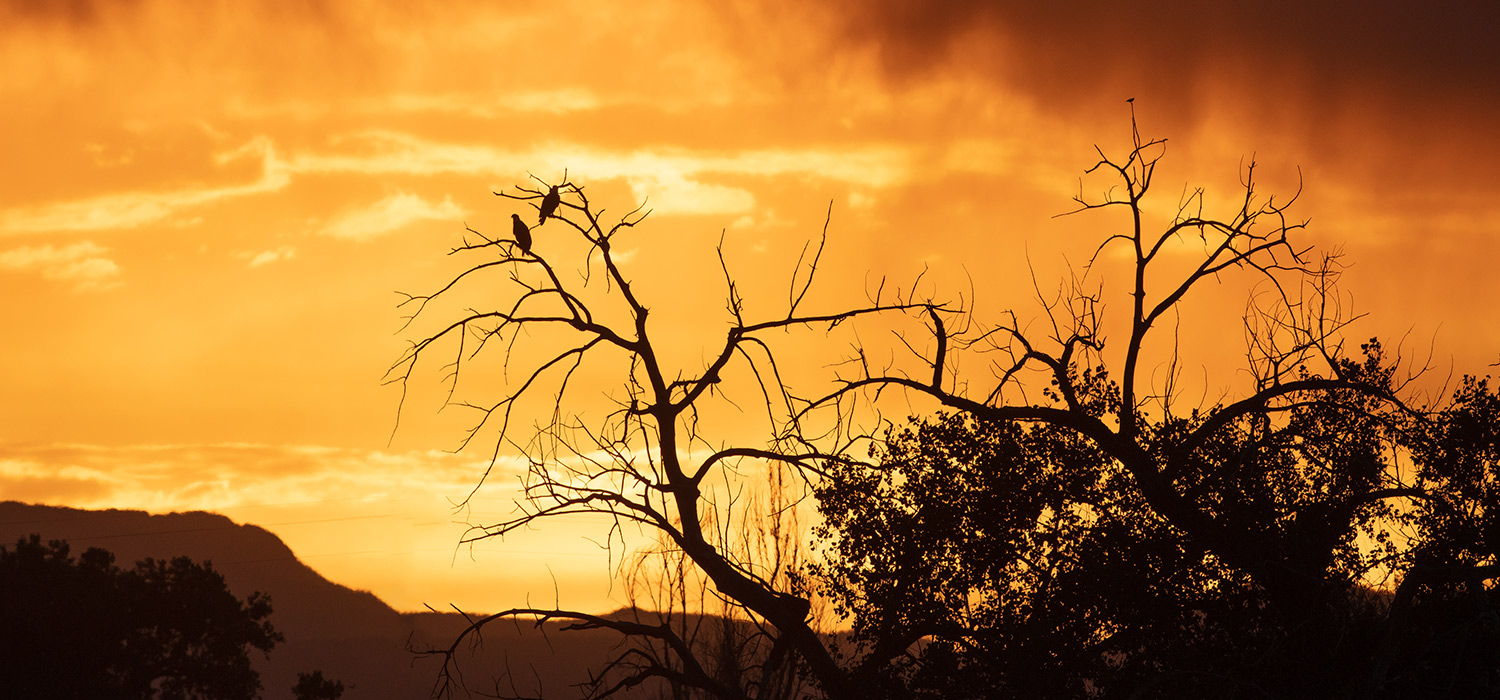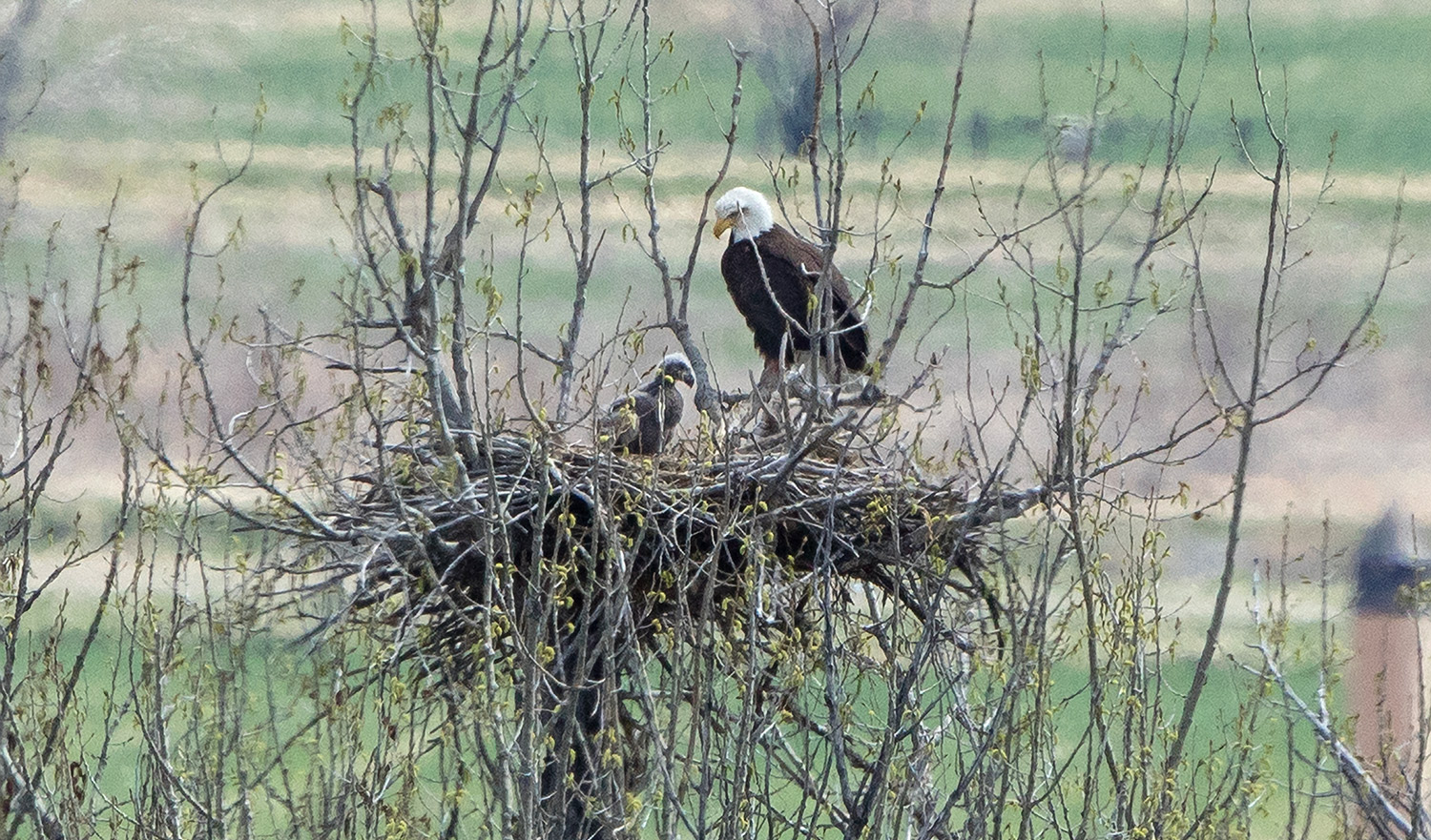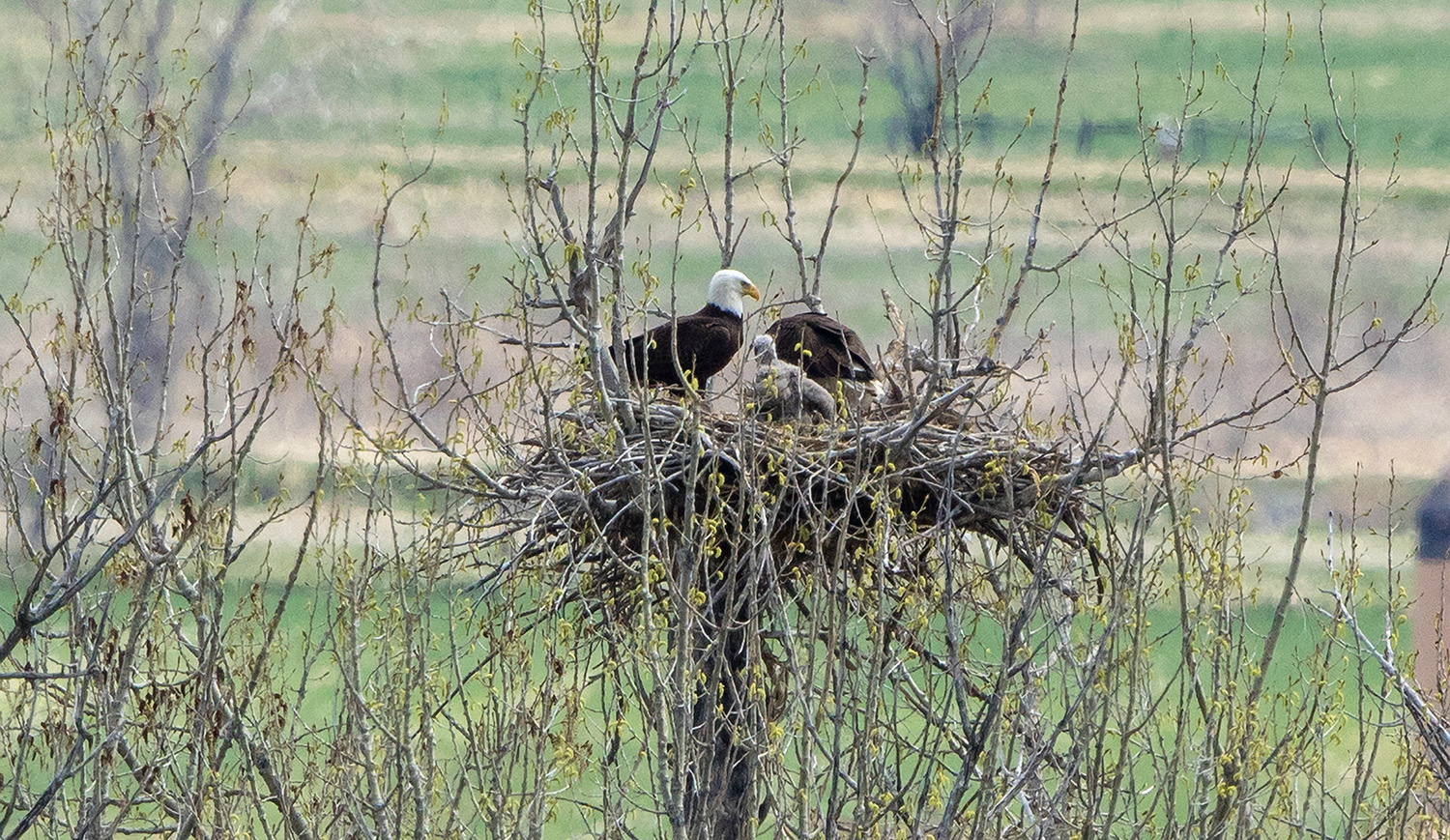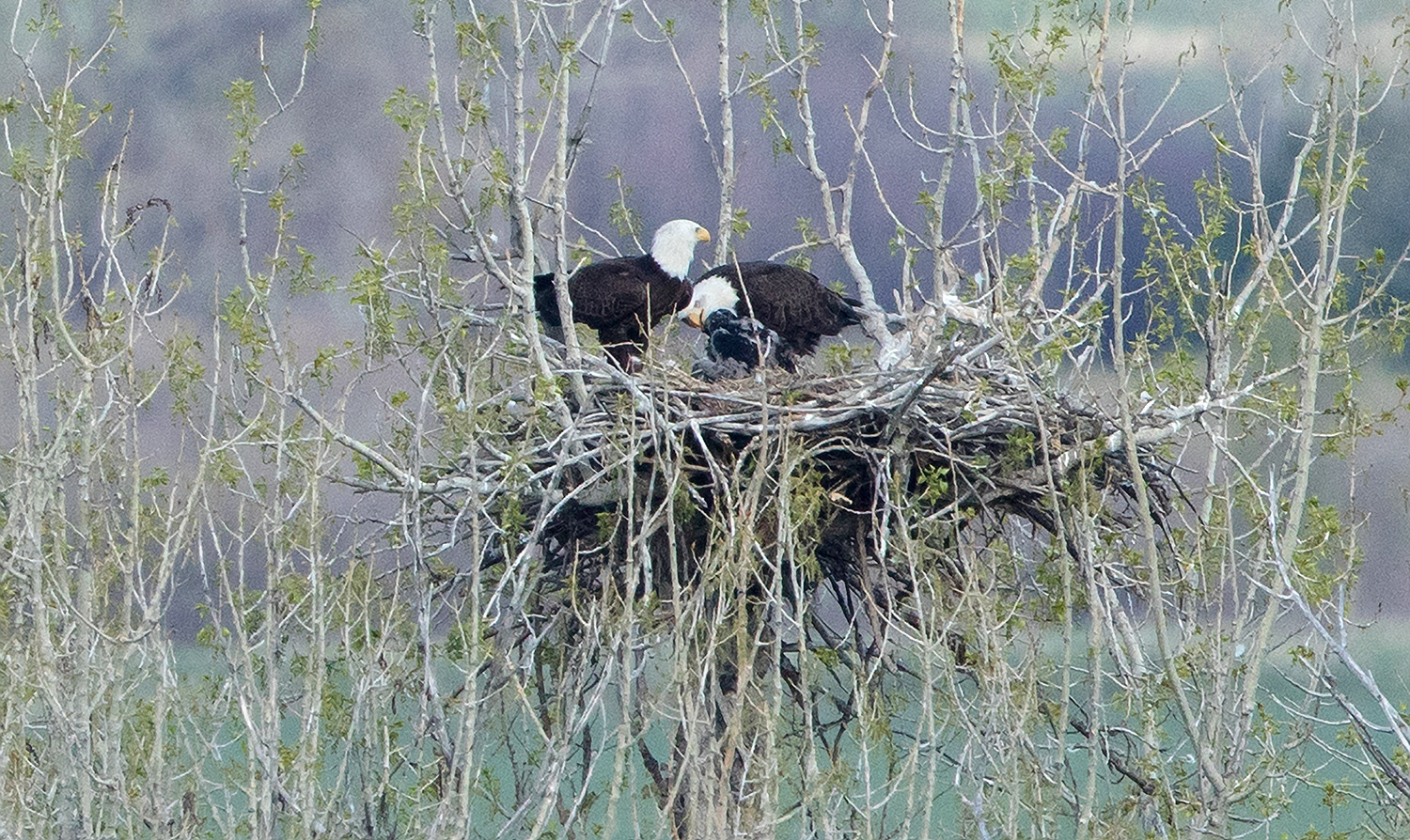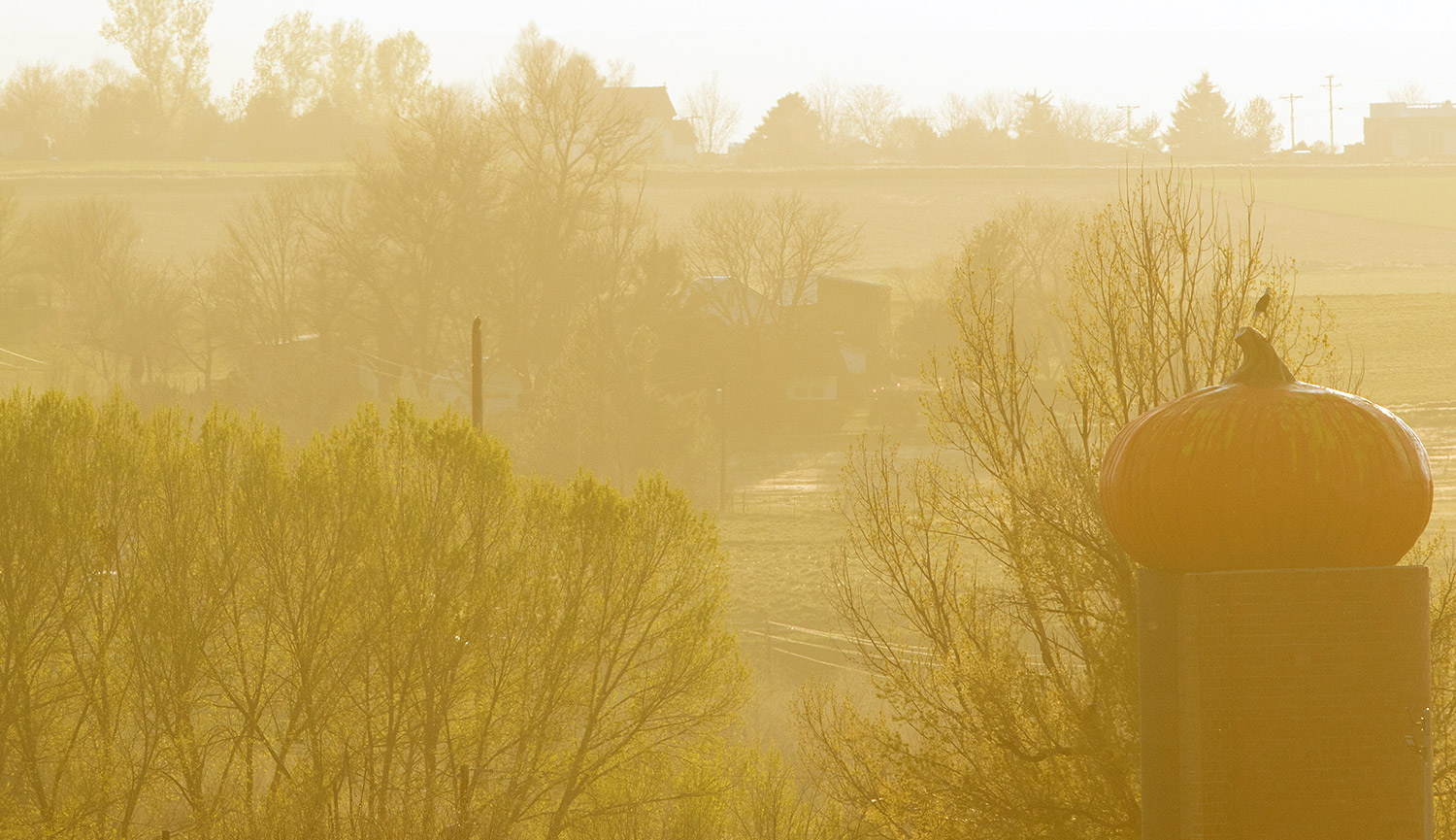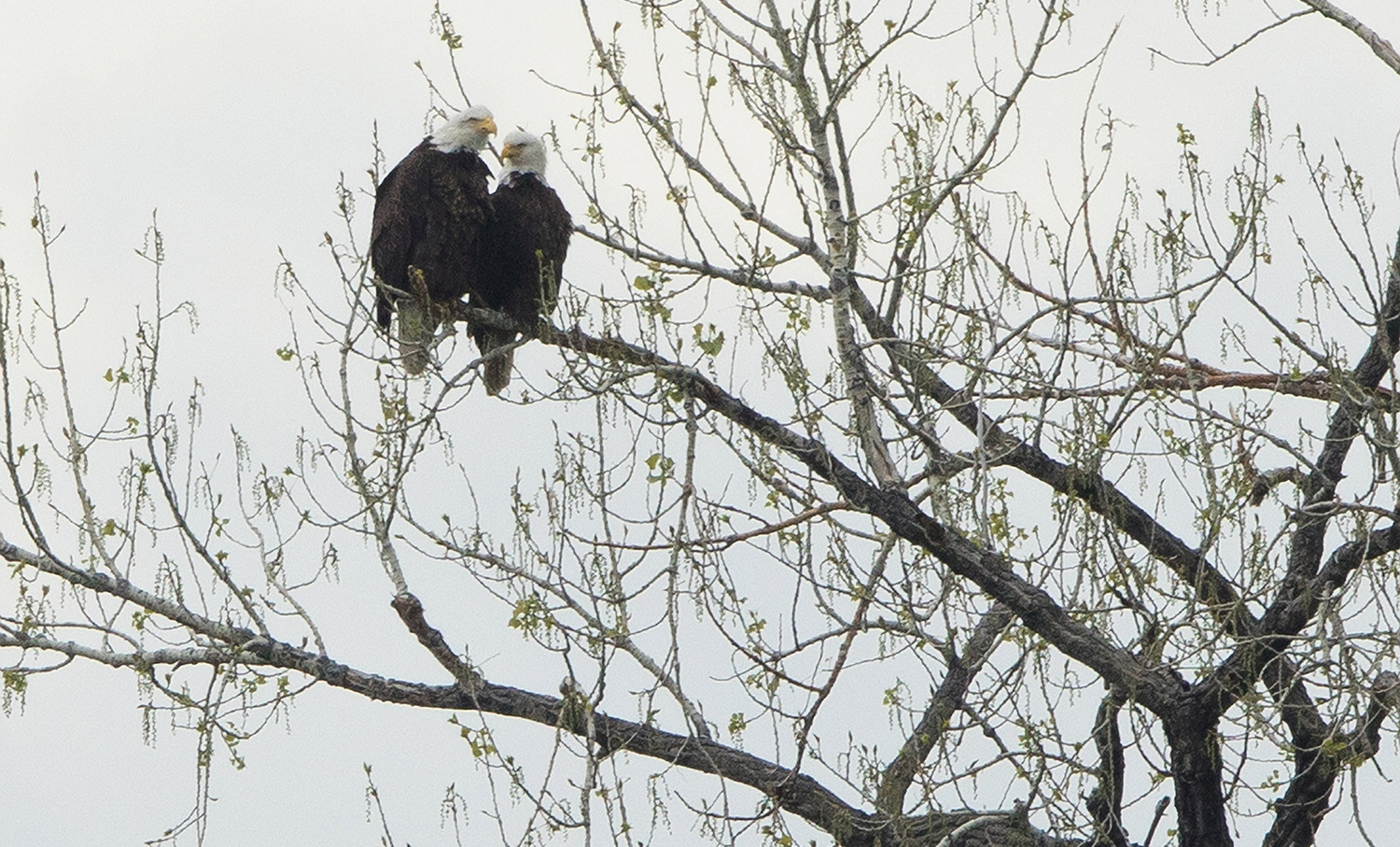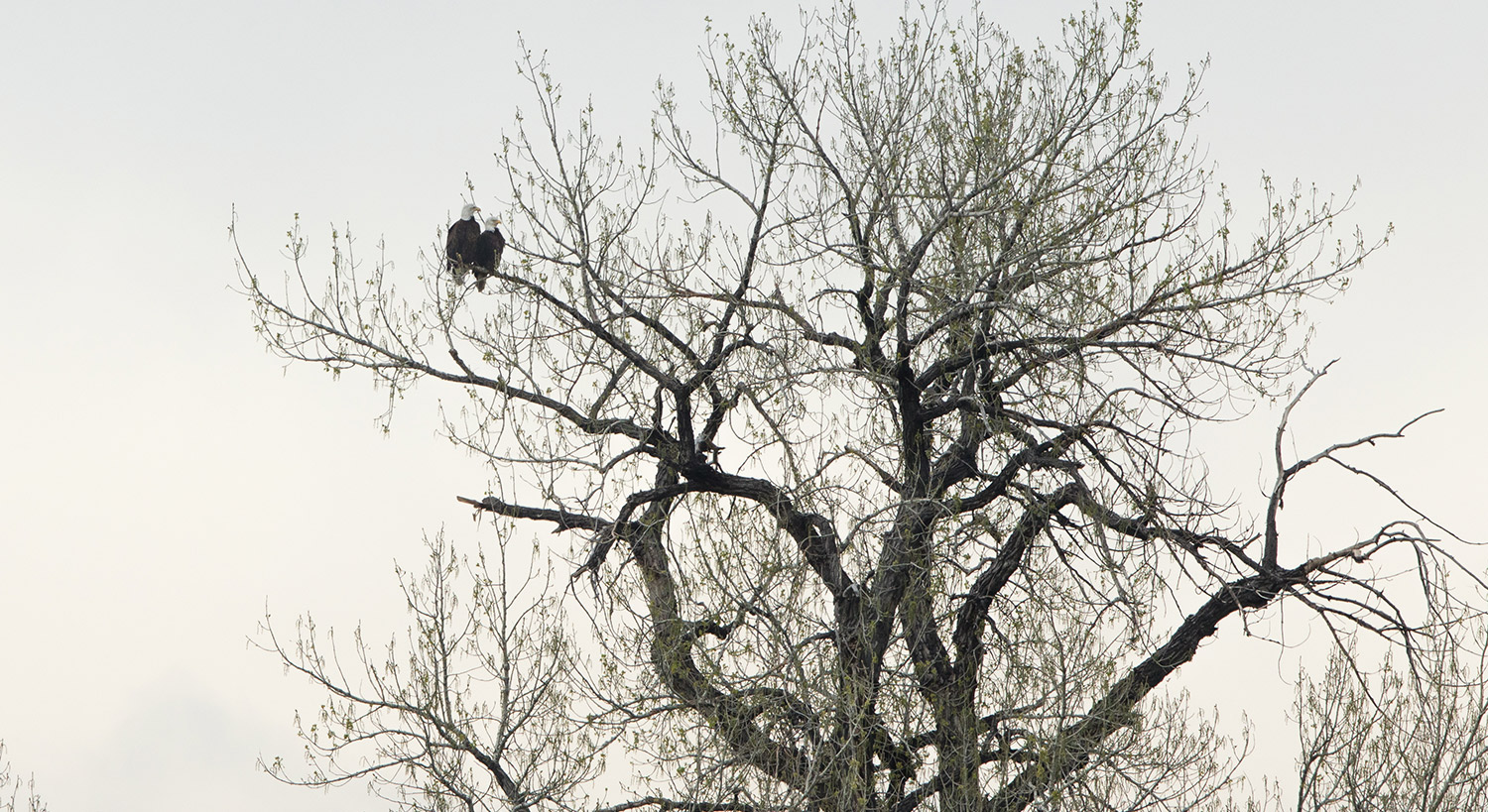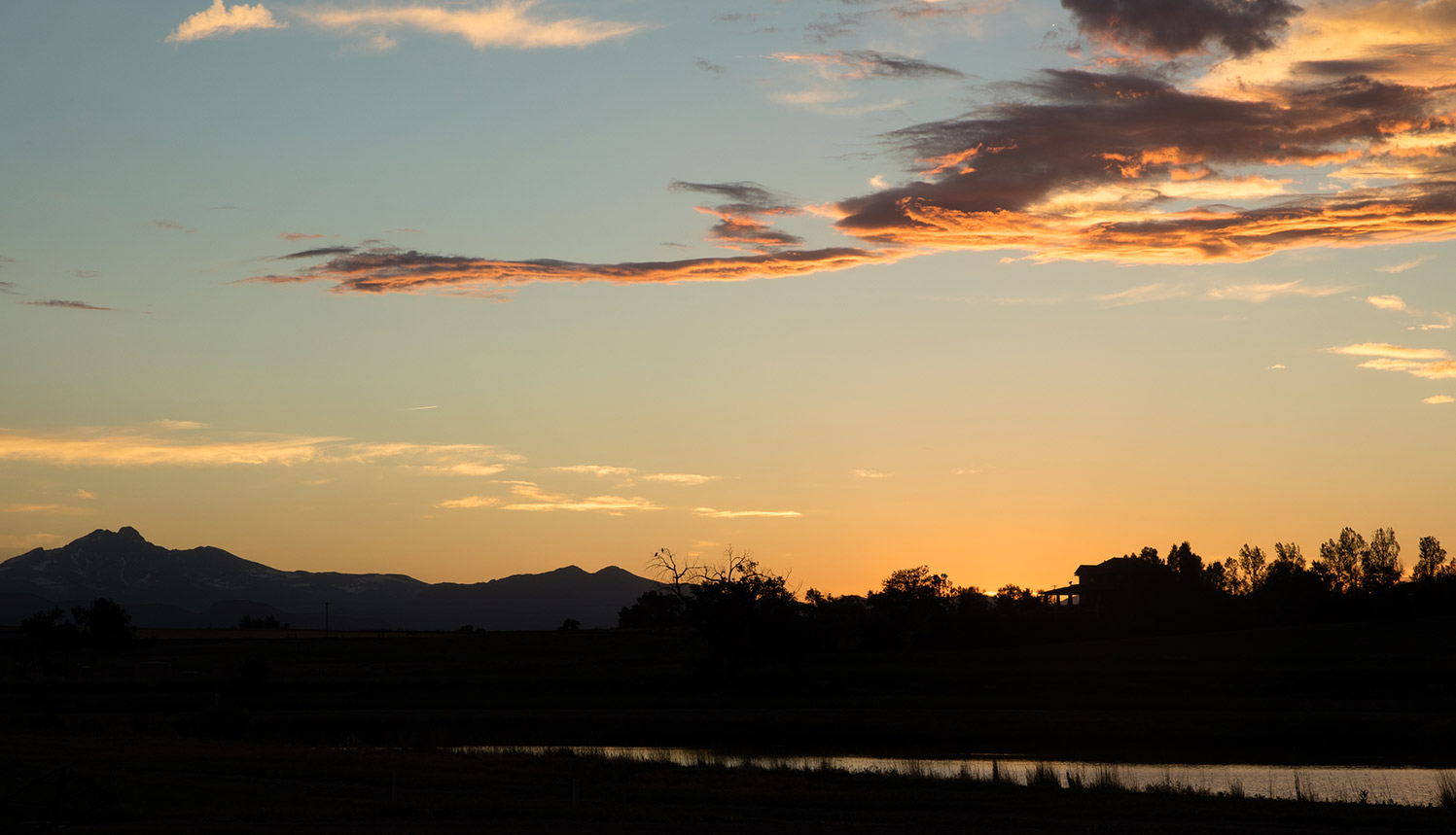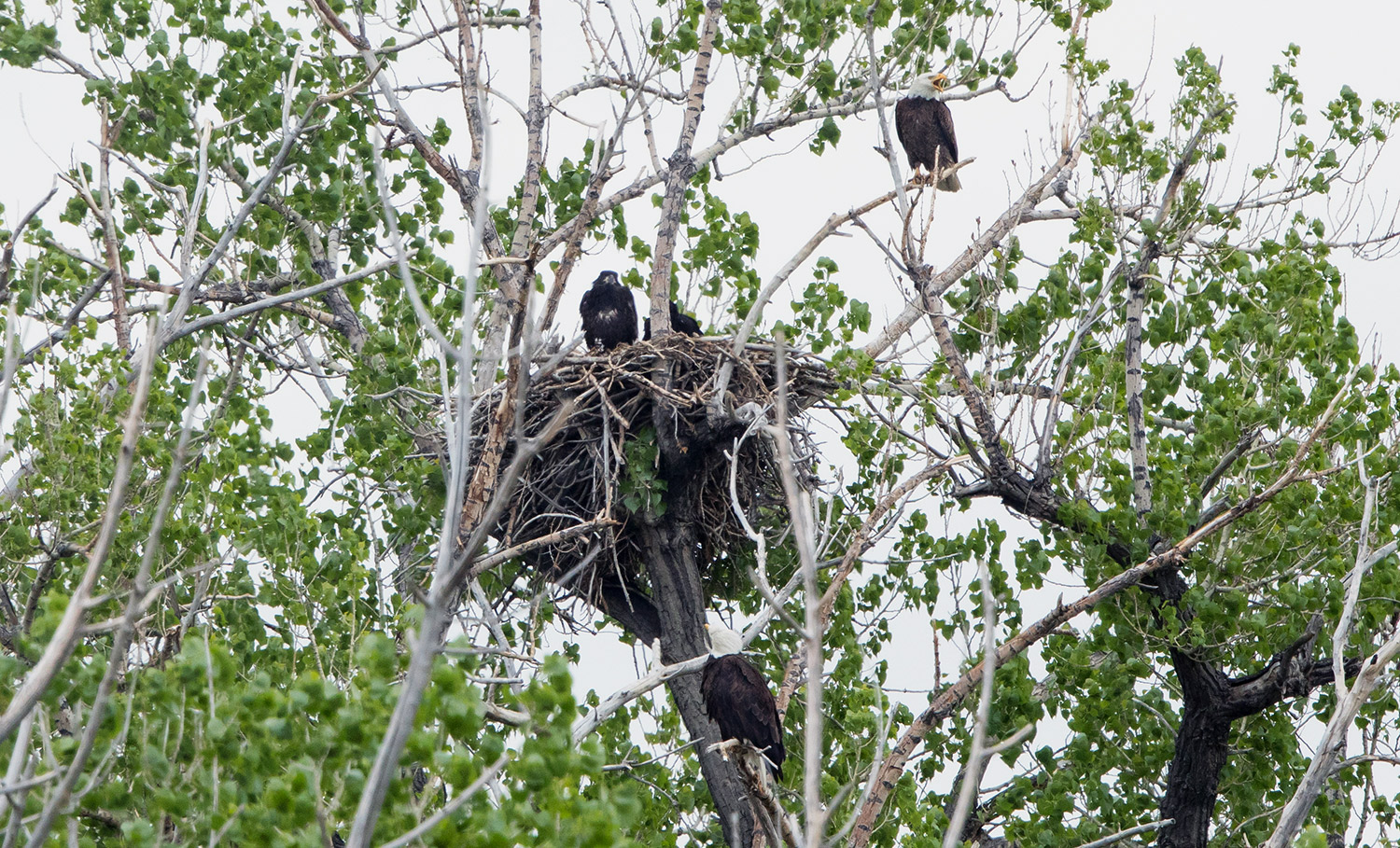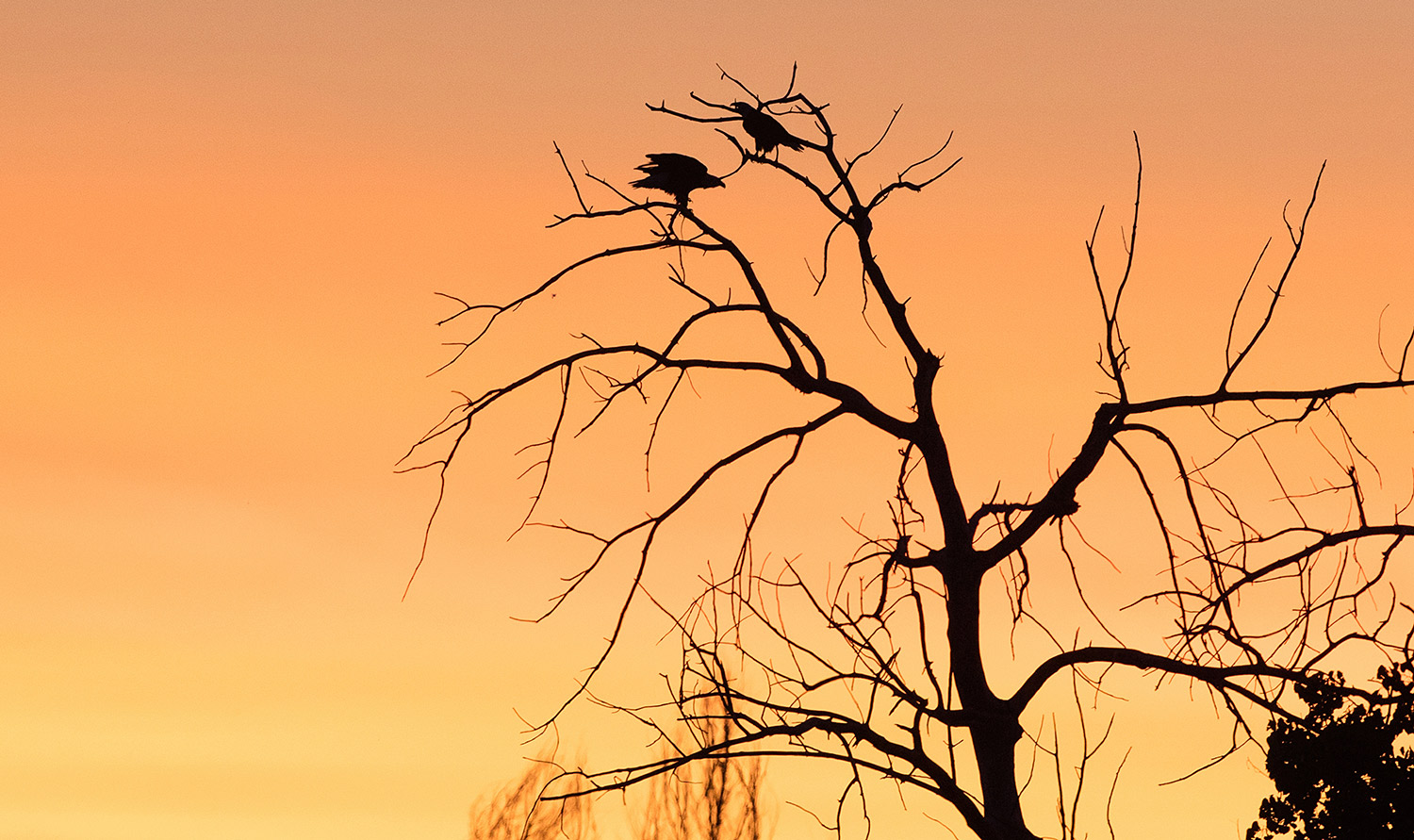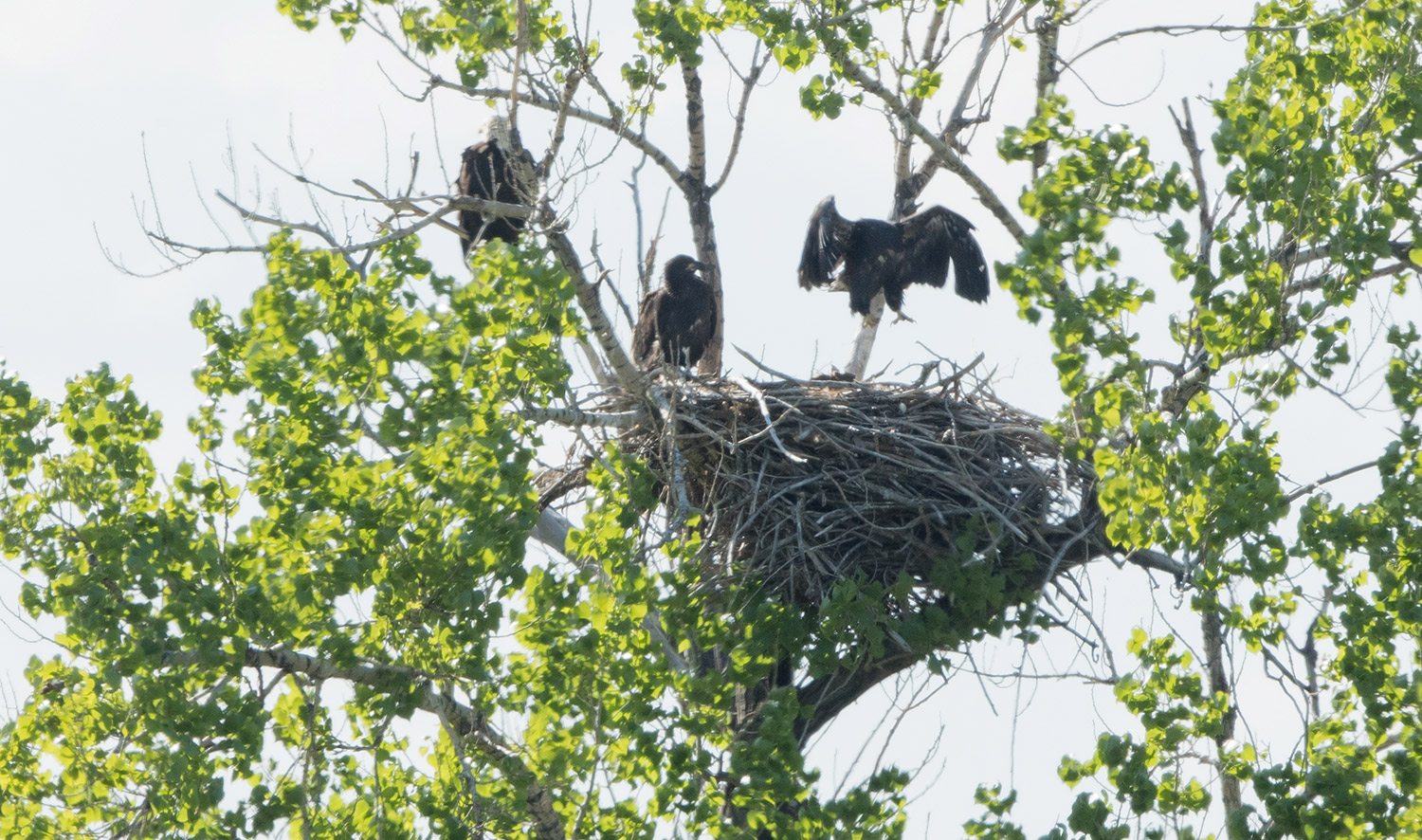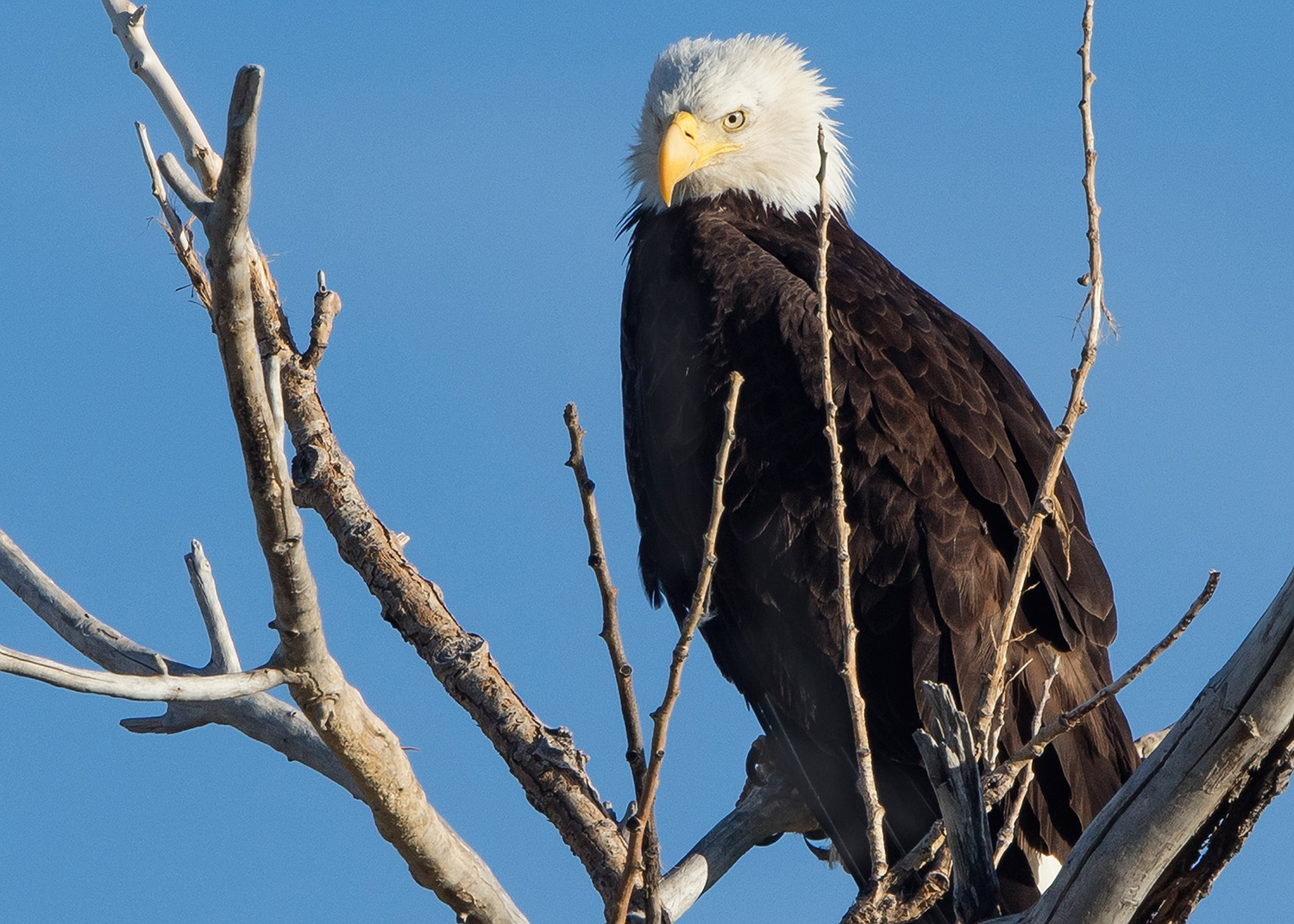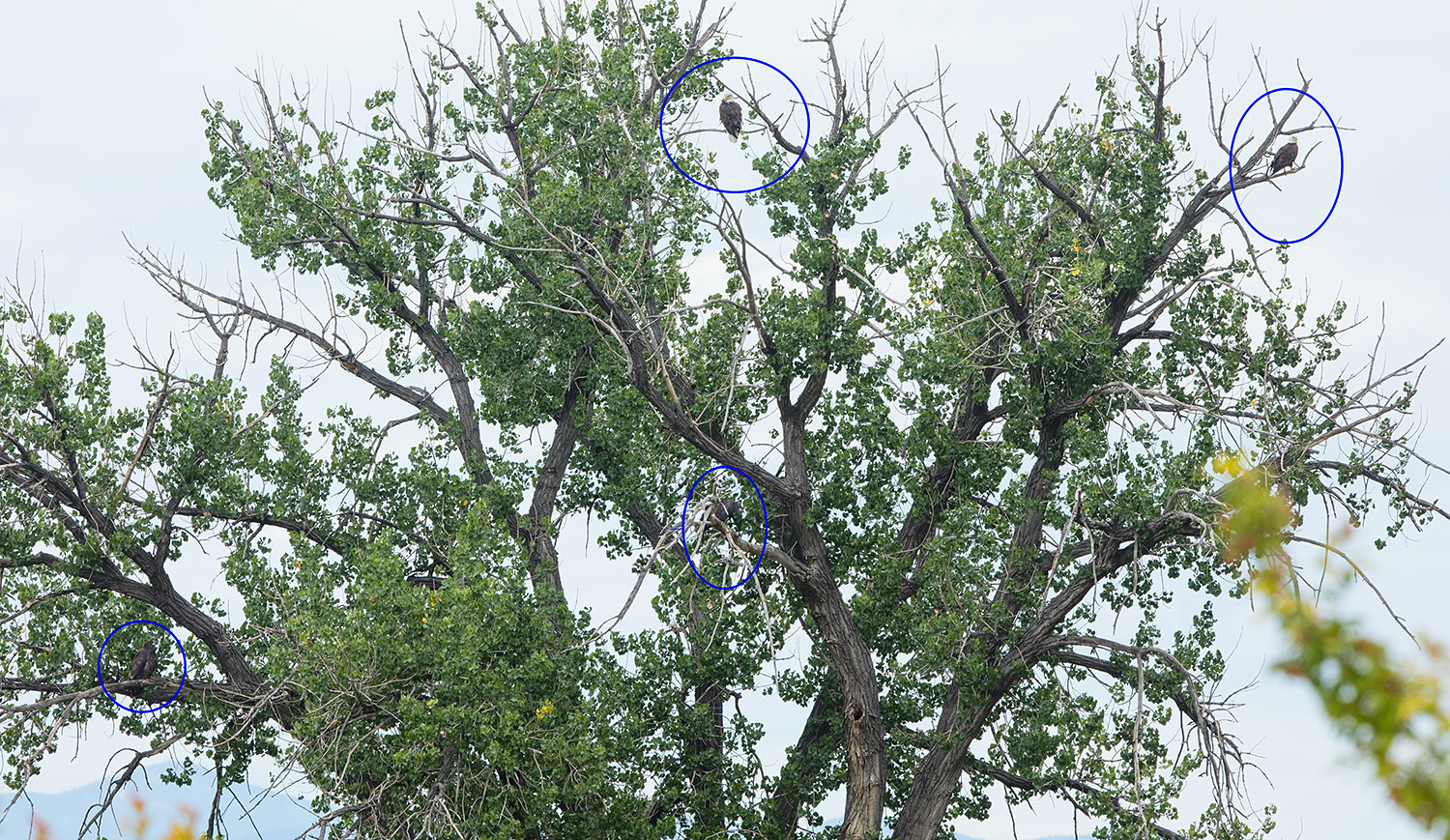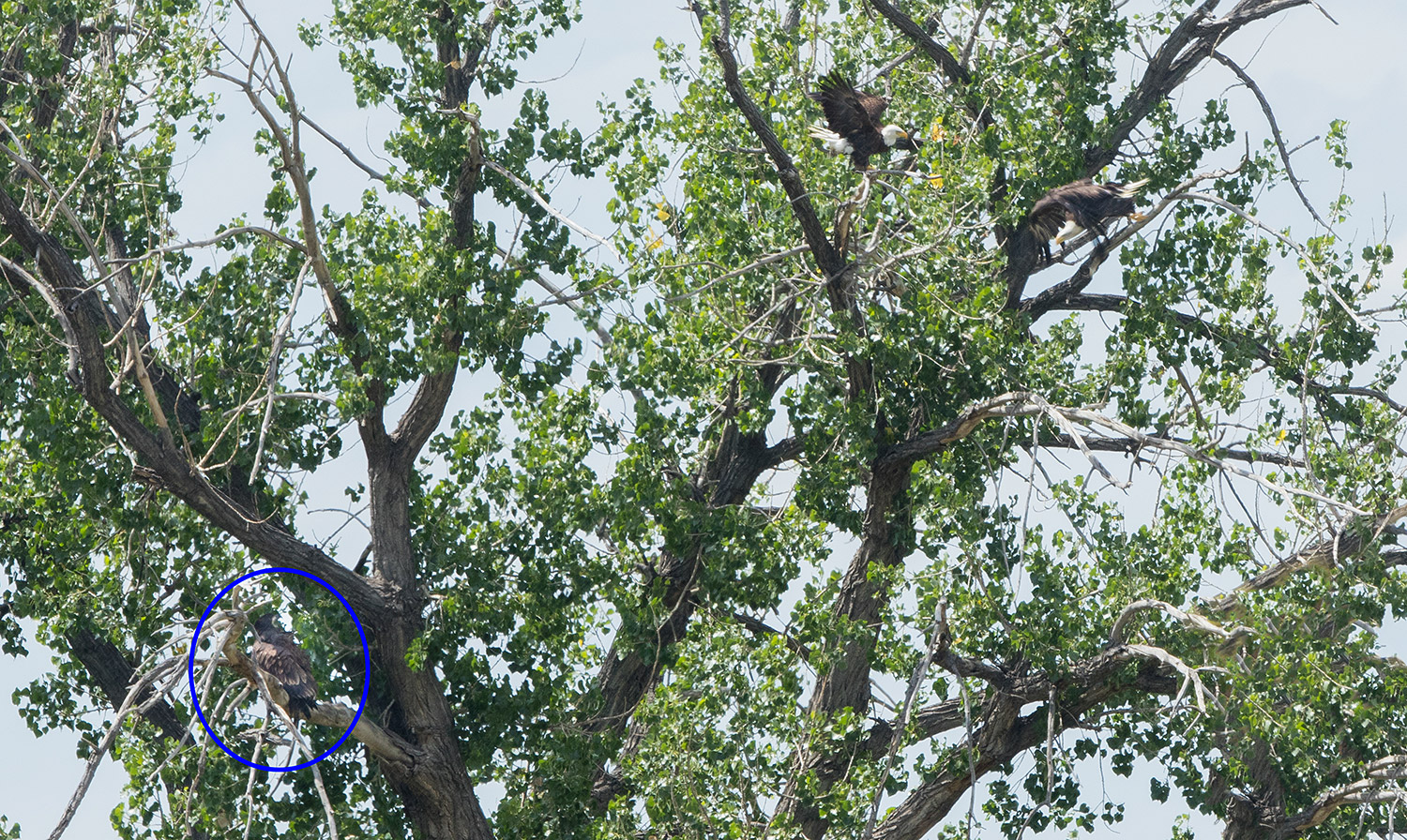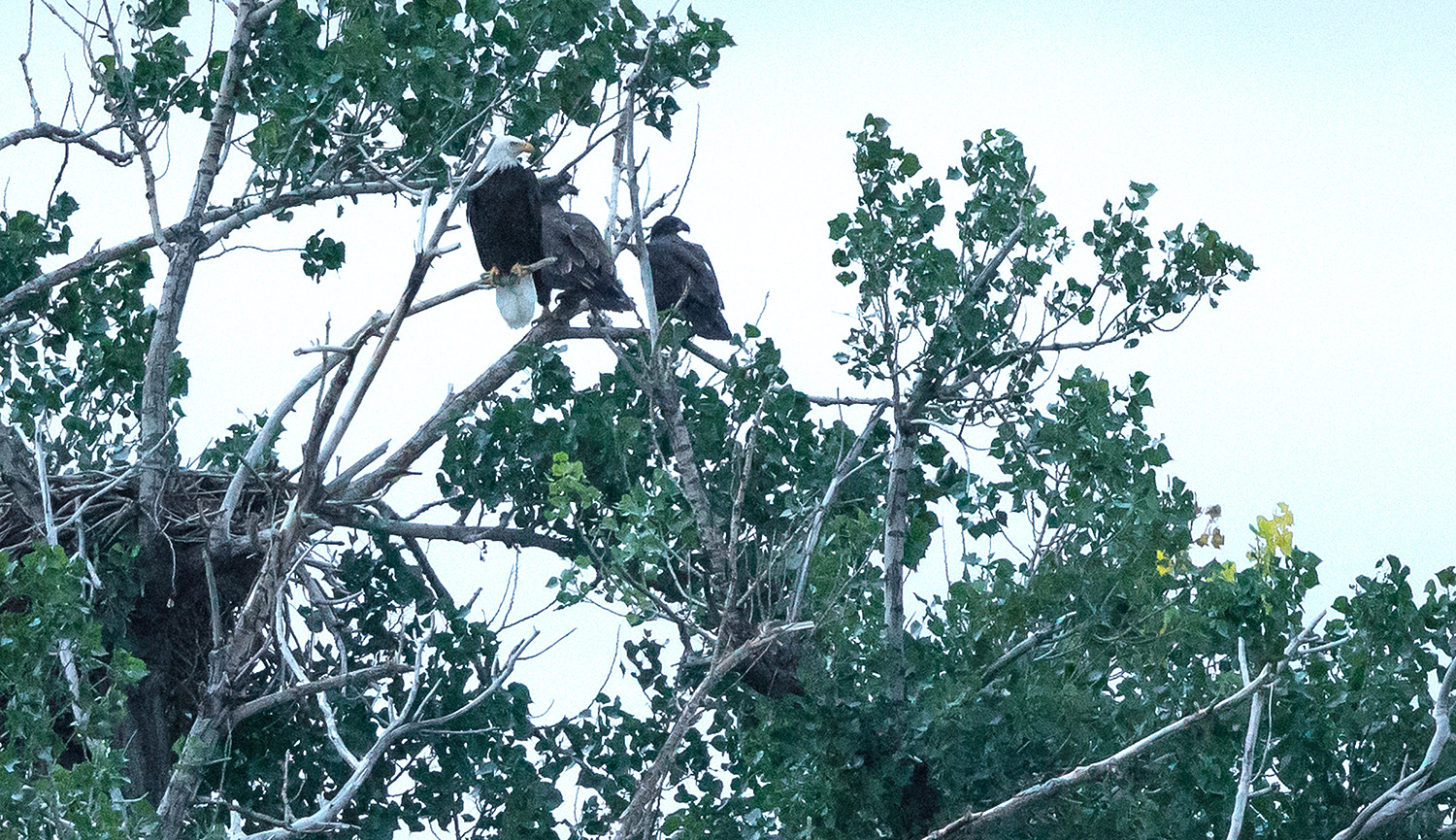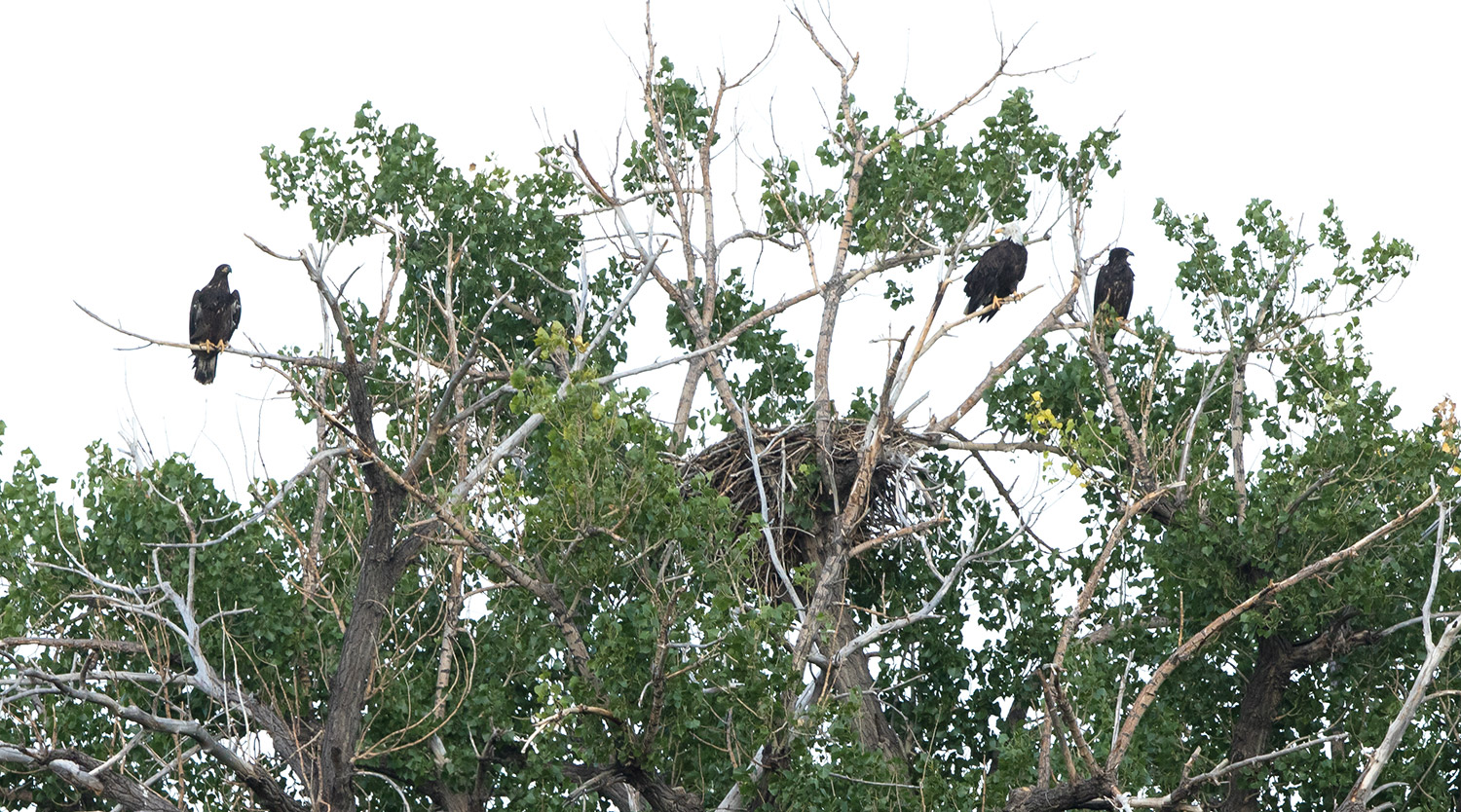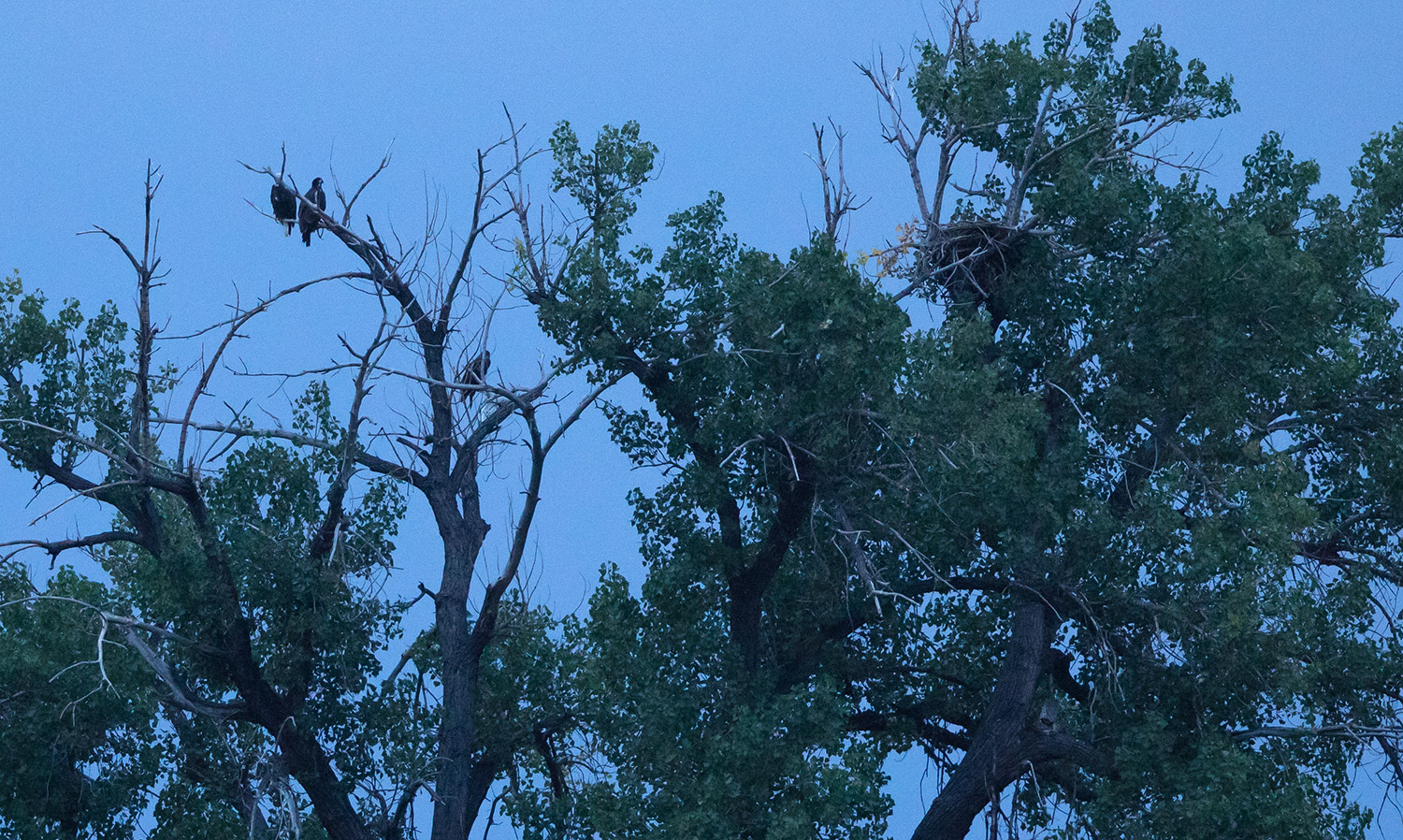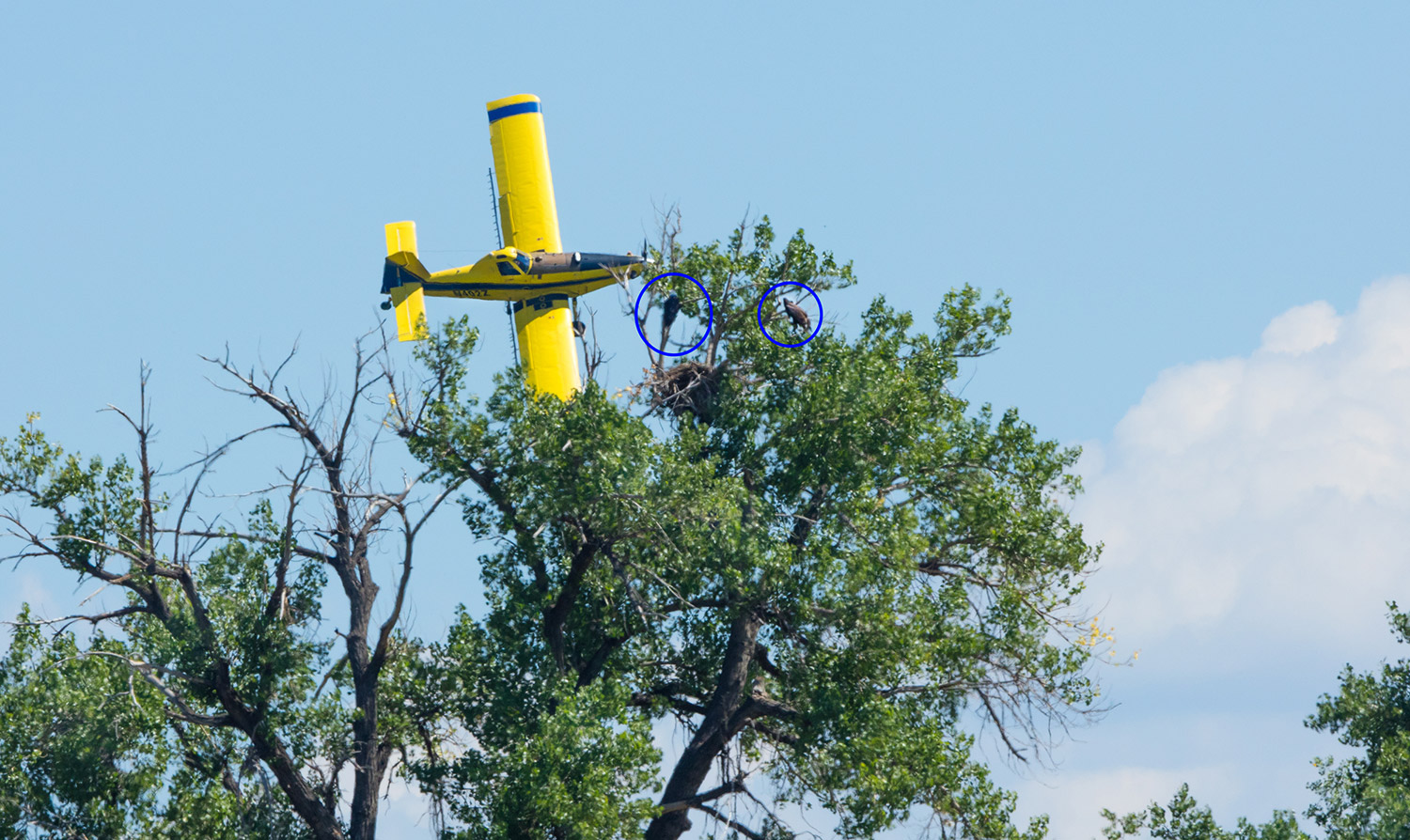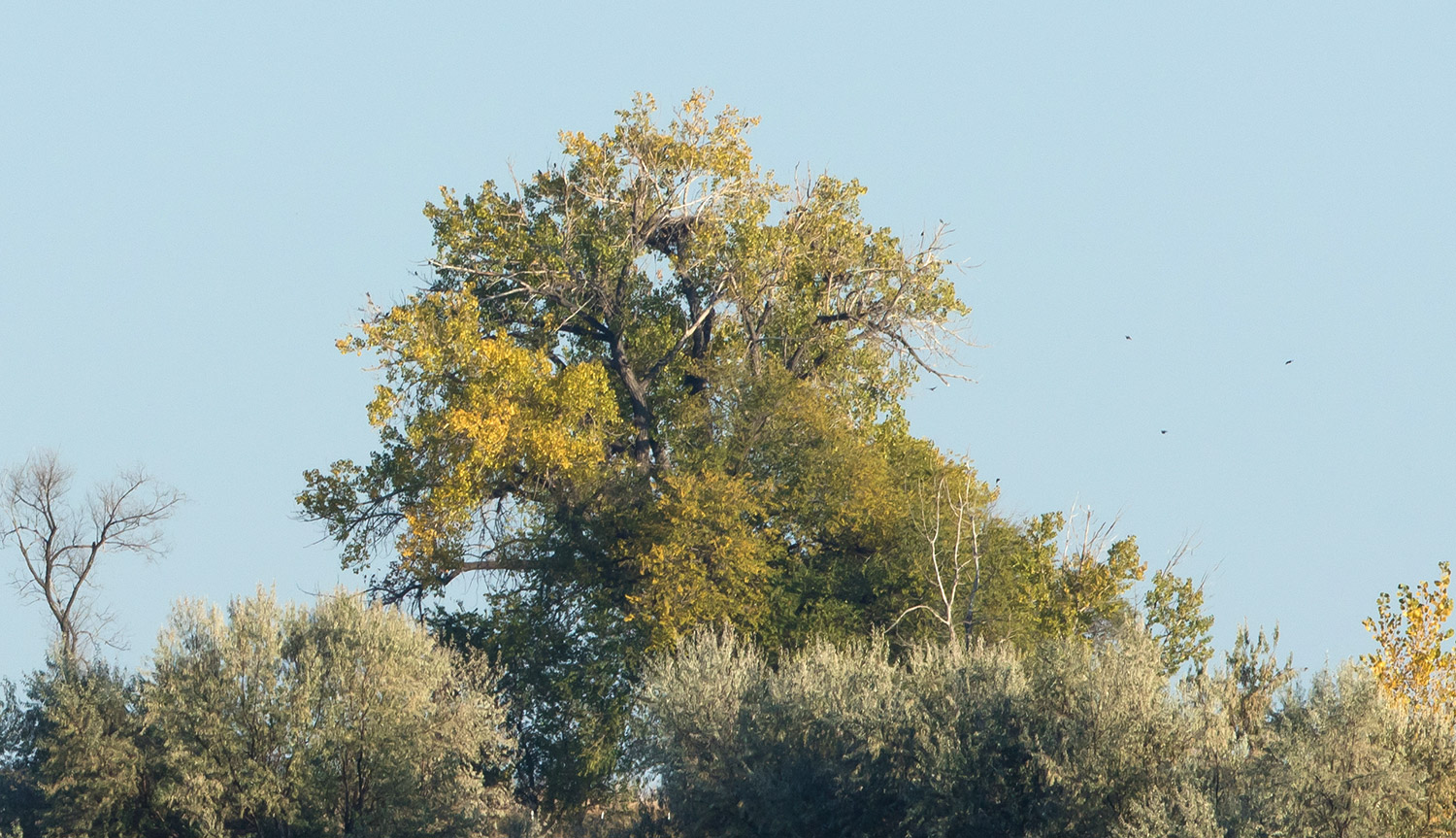The CR16 Nest
A New Pair-2016 Beginnings
The CR16 Bald Eagle pair were dirty headed subadults when we first observed them in February, 2016 (photos 1 and 2). At the time, they were busy adding on to a small nest that they commandeered from red-tailed hawks in a prominent old-growth cottonwood tree along Boulder Creek, in western Weld County (photo 3). These young eagles continued to linger in this old- growth cottonwood through March of that season, although the nest remained relatively small, and no eggs were laid. While we were busy studying other productive nests during that season, we lost track of the young CR16 pair until the following fall.

Photo 1: CR16 female soaring above ponds near original nest tree.

Photo 2: CR16 male searching for fish above a pond near their original nest tree.
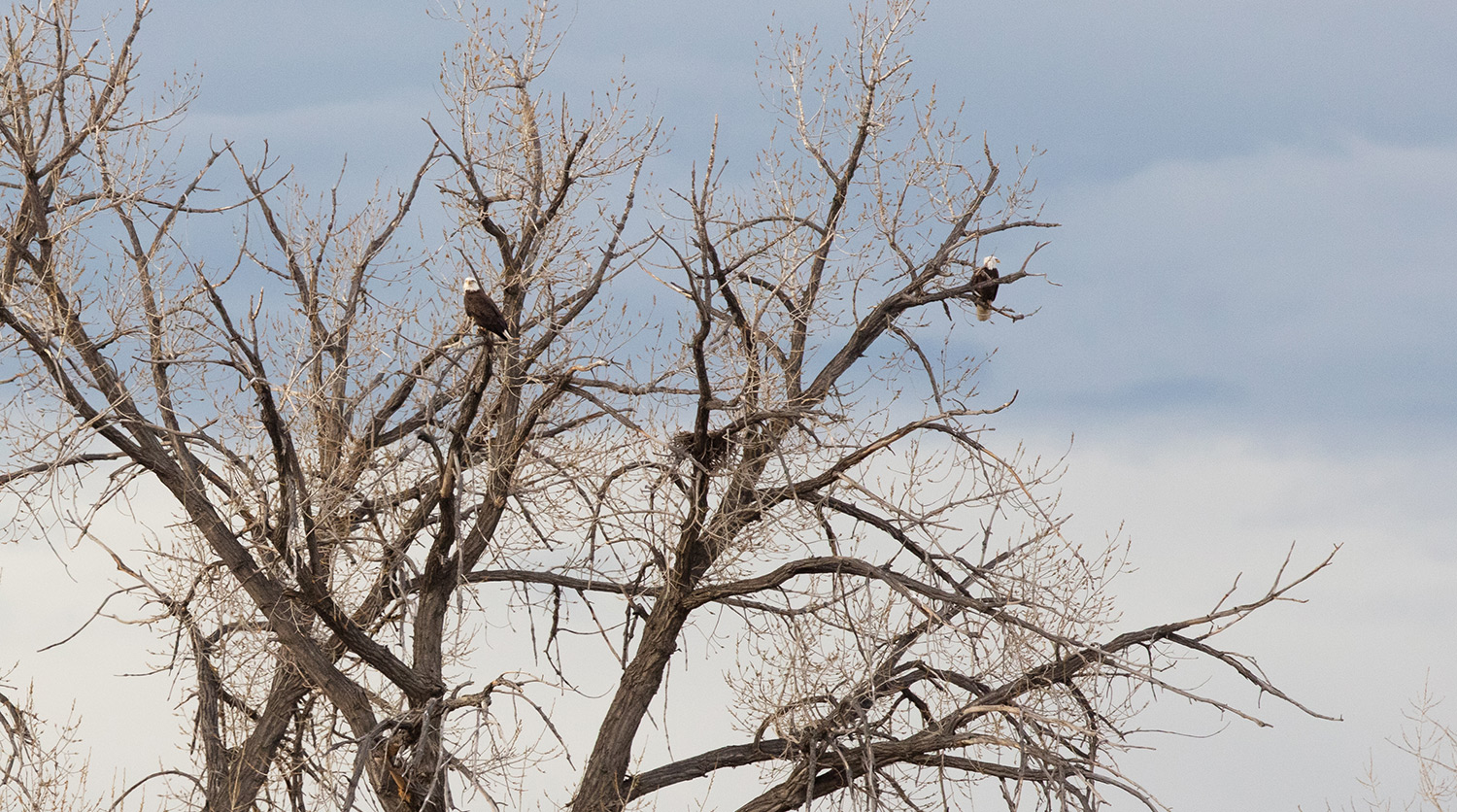
Photo 3: CR16 pair and small red-tailed hawk’s nest in March 2016.
Season Two—The CR16 Pair Reaches Adulthood
What we presumed to be the same pair was once again spotted in the same old-growth cottonwood in mid-November, 2016 (photo 4). They had begun adding material to the nascent nest from the previous winter, and by this time the nest size had grown substantially (photo 5). Now almost 7 months older, both eagle’s heads were nearly all white, although the female retained some dark feathering on her head, and some dark areas were mixed in her mostly yellow beak (photo 6a and 6b).
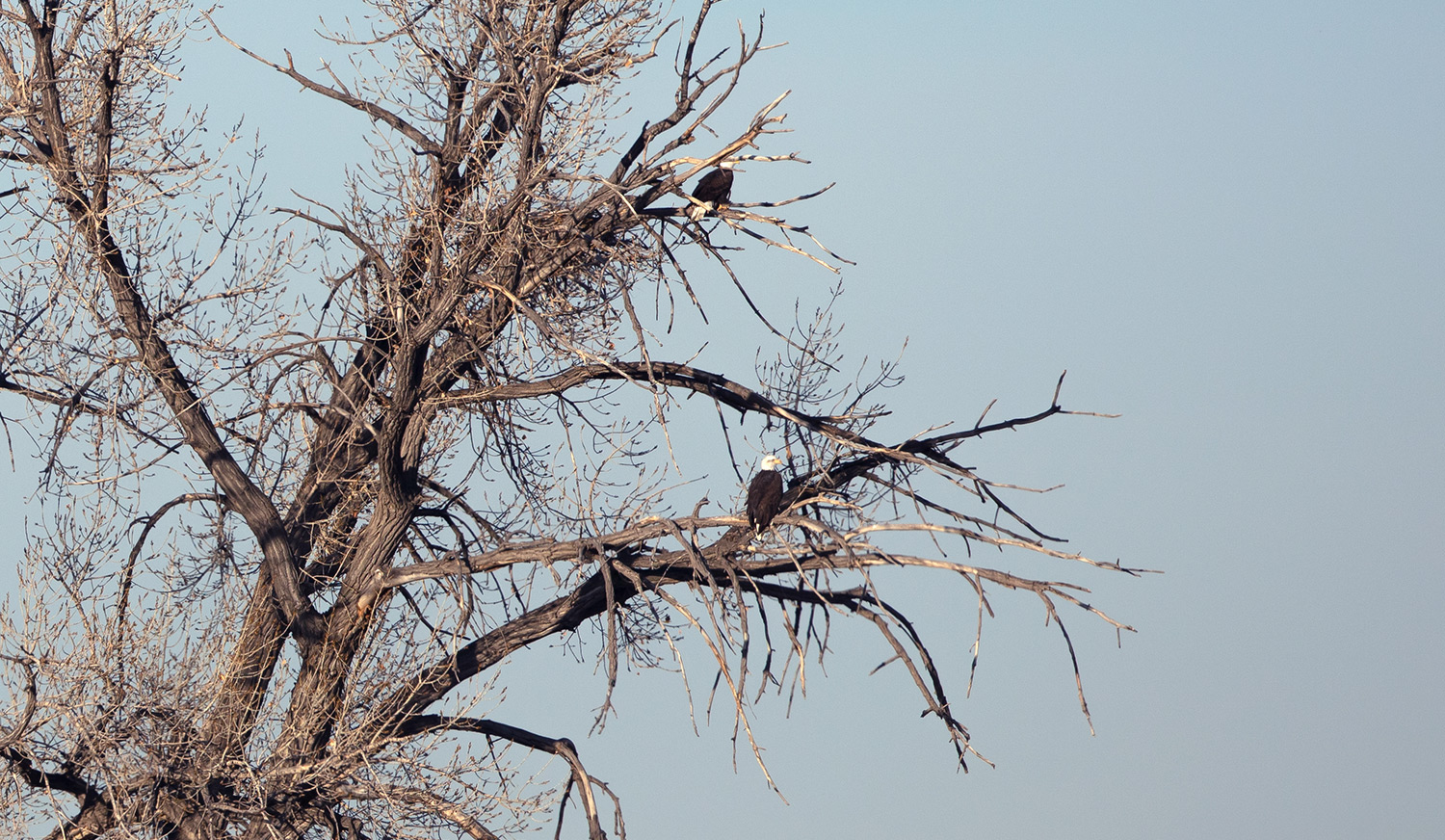
Photo 4: New and larger nest in November 2016.

Photo 5: CR16 male and new nest in November 2016.

Photo 6a: CR16 female still with dark mottled beak and remnant dark feathering behind eyes.
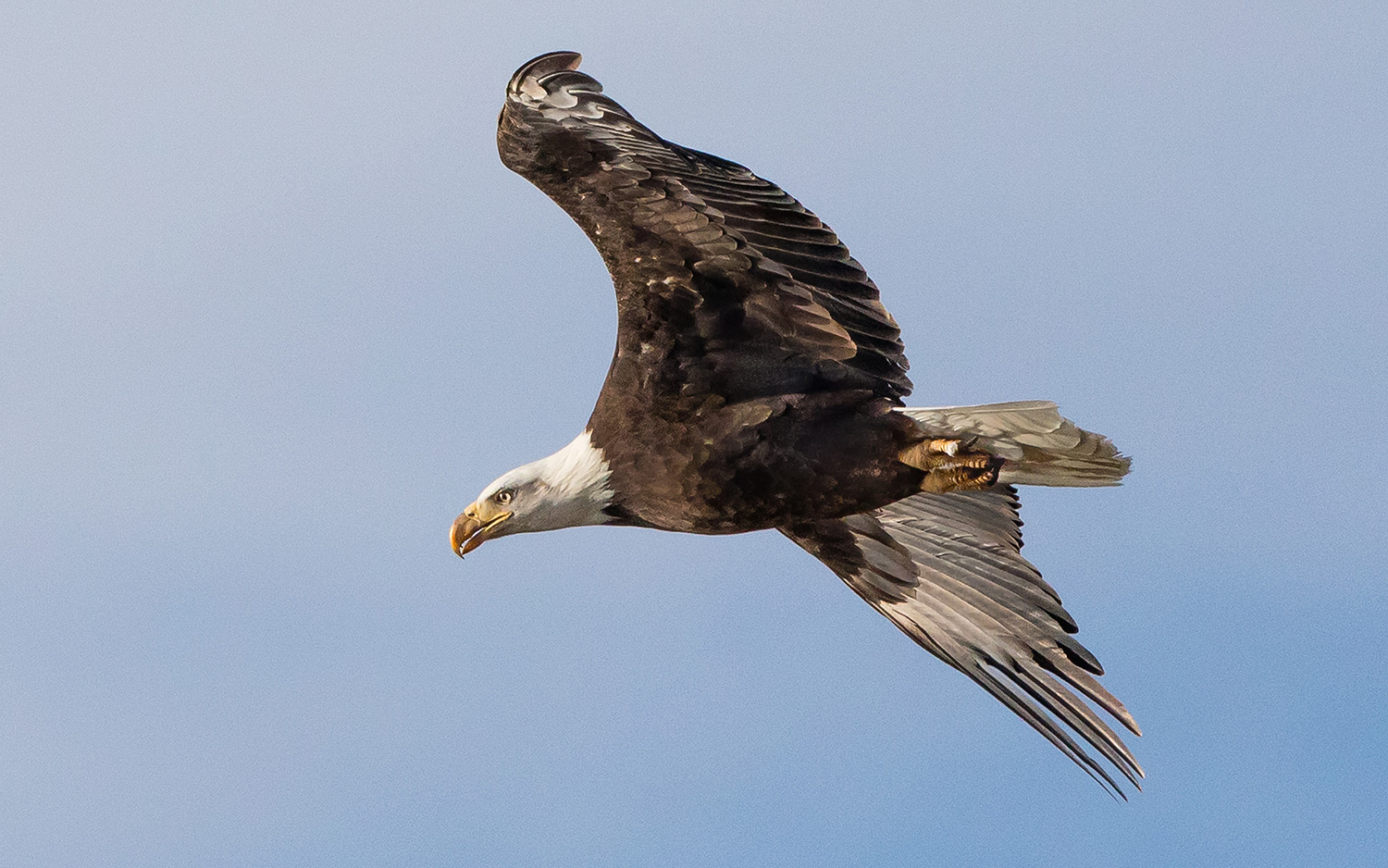
Photo 6b: More recent photo of CR16 female, showing her distinguishing feathering indentation behind her eye.
The nest continued to grow through the end of January, 2017, but ferocious winds in late January and early February destroyed most of the new nest (photo 7). Meager attempts at nest reconstruction were attempted thru mid-February—mostly by the adult male (photo 8)—although, very little progress was made. Please see slide show with original music from this time period.
A few more rounds of nest rebuilding were noted through early March. During that time, the pair were commonly observed perched at a tiny nest–reported by residents to have been previously built by osprey– in a nearly dead tree about ½ mile west of their original nest tree (photo 9). Could the pair have claimed this tiny nest to lay their eggs that were imminently due, rather than do so on the ground? A suspicion that we were unable to confirm.
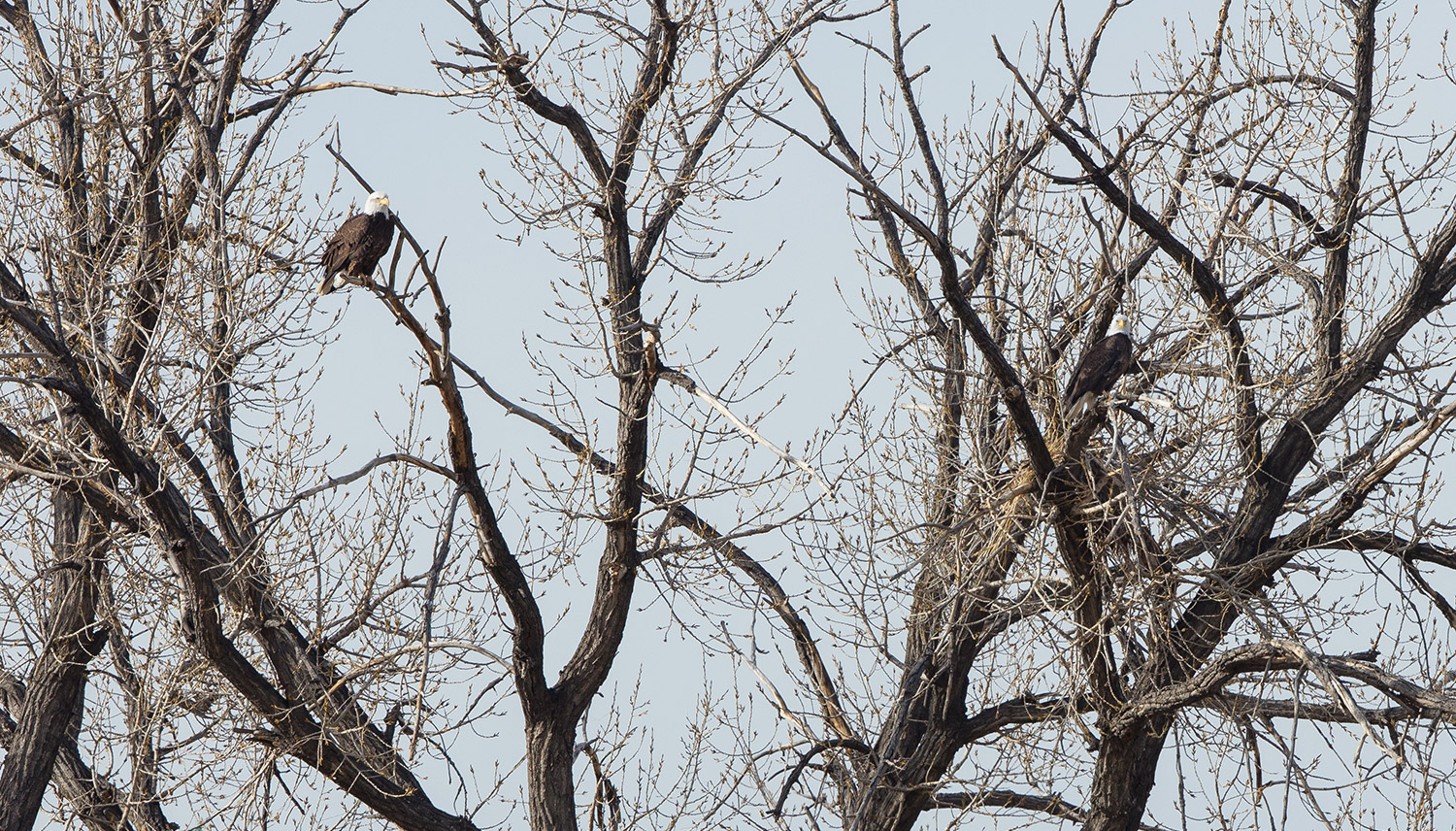
Photo 7: Remnants of new nest after punishing winds in January 2017.
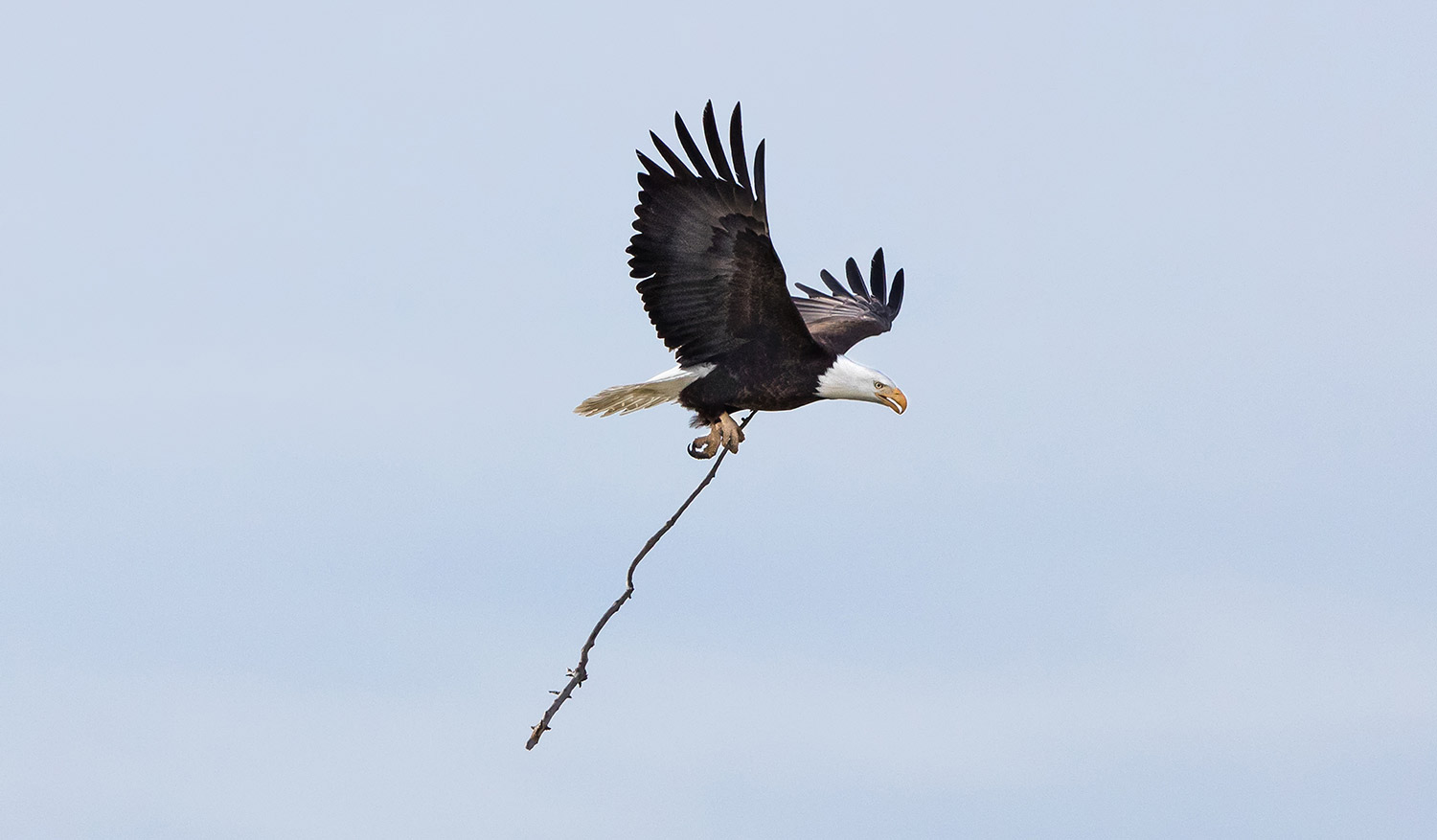
Photo 8: CR16 male brings stick in a futile attempt to repair wind damaged, and largely destroyed nest in early February 2017.

Photo 9: Small osprey nest in what we call perch D, where CR16 adults began spending time after their nest was destroyed by wind.
The CR16 Nest Territory—Bucking A Trend?
It is notable that the CR16 pair established their first nest site only 1.5 to 2 miles from adjacent Bald Eagle nests. This is nearly one-half the average nearest-nest distance of 15 active nests in our 2,000 km2 (1,243 mile2) study area. Since nesting Bald Eagles establish nest density or distance to nearest-nest based on available resources, we wondered if this abbreviated nearest-nest distance might have negative consequences due to territorial competition for limited resources. While over time, some aggressive interactions with adjacent territorial Bald Eagles were recorded, the majority of competition and disturbances originated from other sources including: 1) non-breeding, wintering bald eagles utilizing their nest tree and nearby resources (photo 10), 2) spring through summer camping and boating at the nearby ponds (photo 11), 3) oil and gas development (photo 12) , and 4) periodic shooting and other activity by the landowner near the base of the nest tree.

Photo 10: Non-breeding Bald Eagles share the original CR16 nest tree and adjacent perches. While the CR16 pair (white headed adults) occasionally would defend their nest tree, they spent little energy chasing away the plethora of eagles that came to utilize their nest tree during migration up the Boulder Creek corridor.
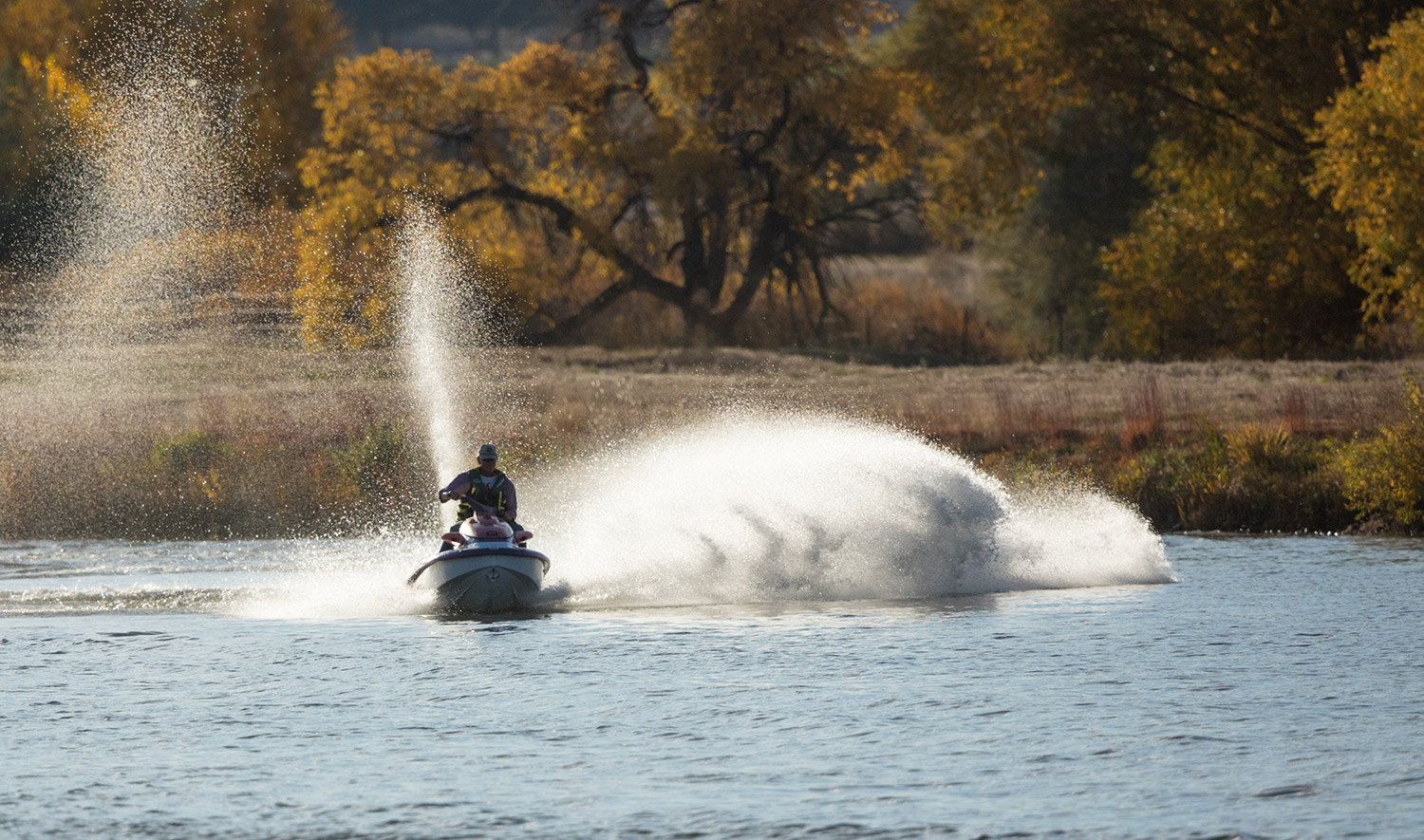
Photo 11: Jet ski during fall of 2017 traveling along the pond below the CR16 nest tree.
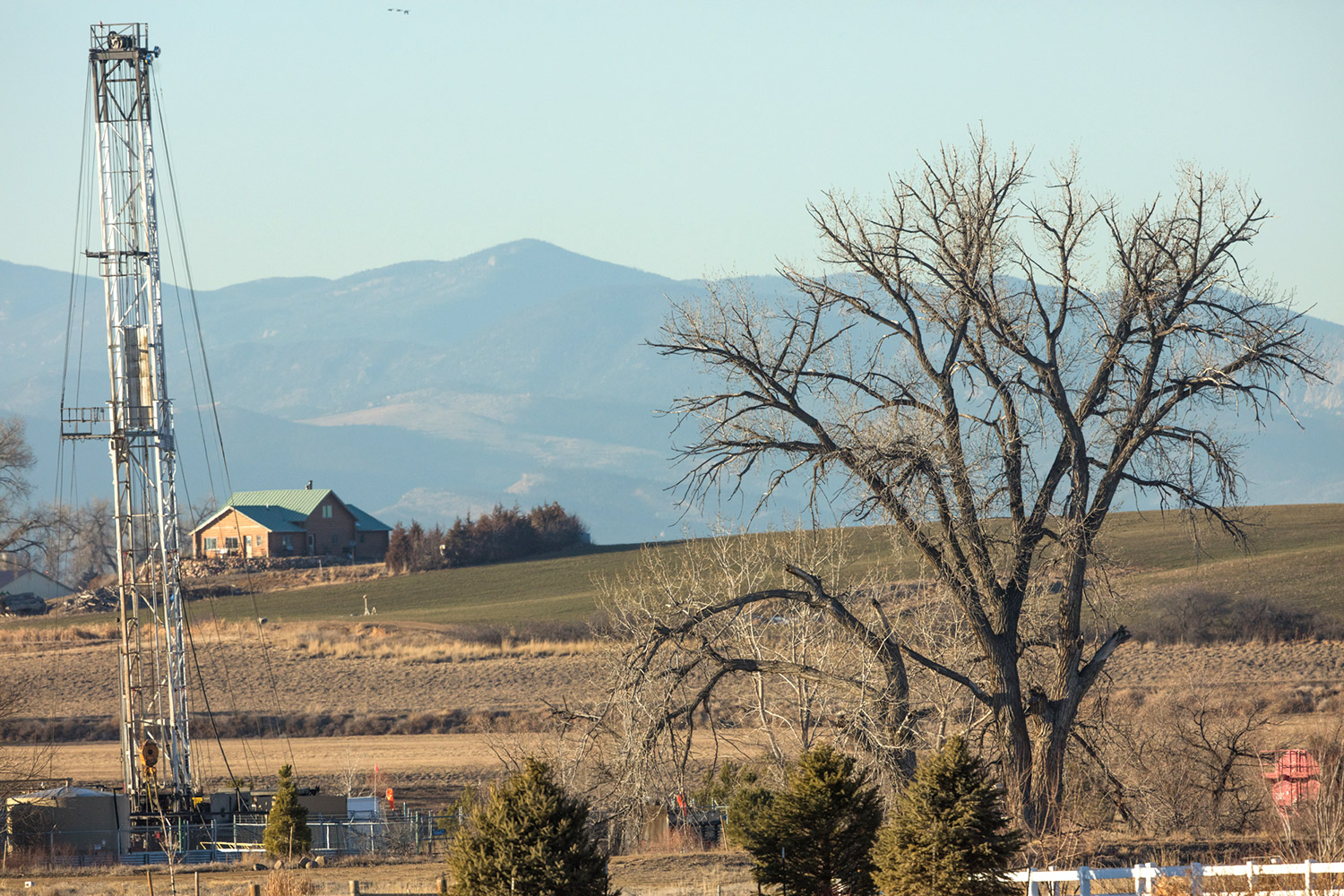
Photo 12: Oil and gas “workover” drill rig next to the CR16 nest tree in January 2017.
The CR16 pair continued to occupy their territorial perches within about 3/4 mile radius of their original nest tree through spring and summer of 2017. During late spring through early November, the pair were observed most nights roosting side by side in a weathered old-growth cottonwood about ¾ miles west of their original nest tree (photo 13). We continue to marvel at the sight of the CR16 pair in this same tree while heading home from field work most nights during this same time of year.
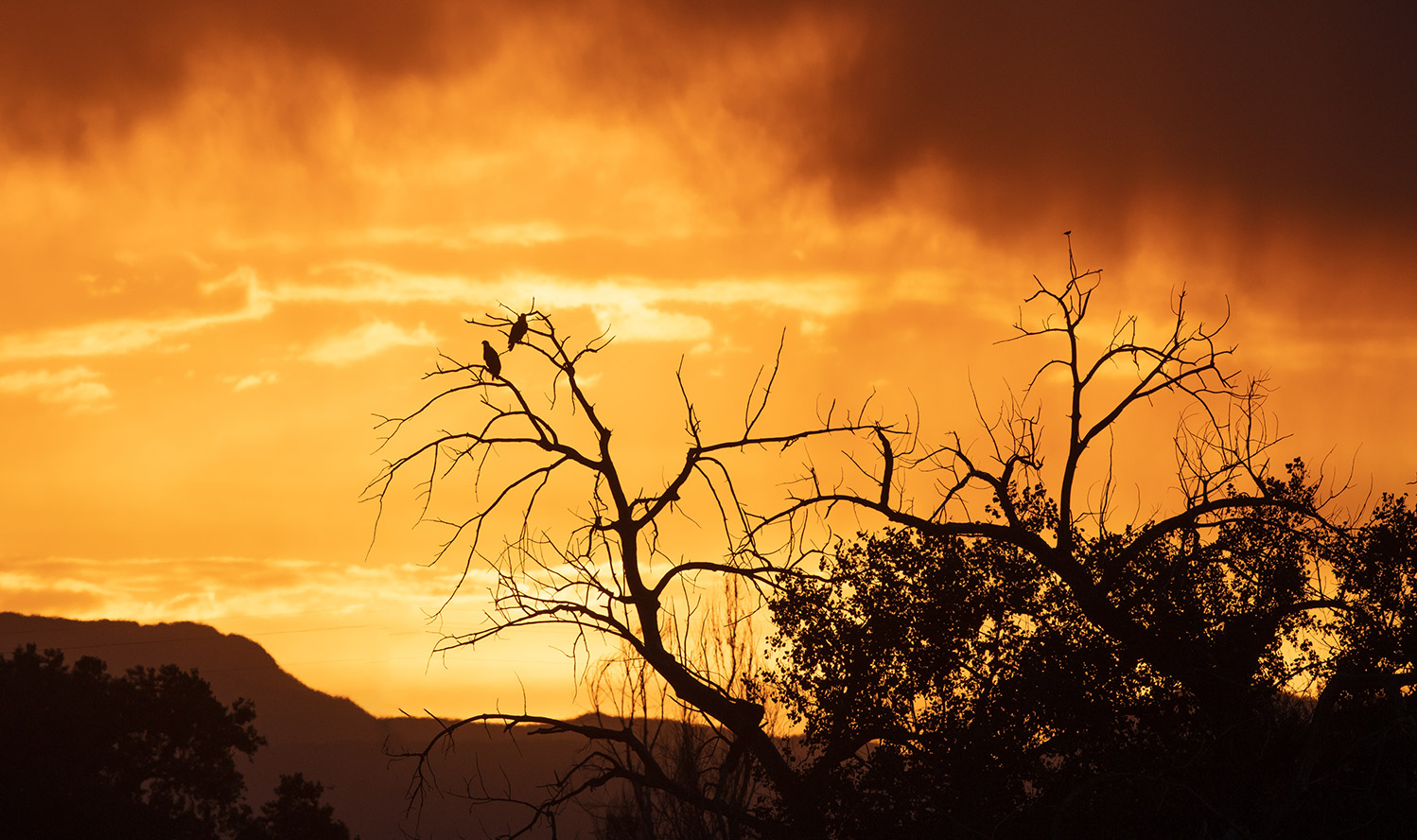
Photo 13: Perch E or night roost tree that the CR16 pair occupies most nights from May through middle November.
Fall of 2017—Time to Find a Quieter Area to Nest
A dramatic shift in perch activity was noted in early October, 2017, as the pair began spending much of their time on perches localized about 1 mile south of the original nest tree (photo 14-16). This shift in perch locations was correlative with construction of a new nest along a relatively remote section of Boulder Creek, just to the west of these new perch sites (photo 17). The nest was built upon an existing heron nest, located at the exposed top of a tree that would sway even in modest winds. The young pair began incubation that year around February 18, and first hatch was noted on March 23. The hatchlings were regularly attended to by both adults, but something was clearly wrong on April 4th, when both adult eagles were observed perching side by side about 1 mile away from their nest, in their previous nest tree. Concerns of a disaster were confirmed minutes later, as the entire nest and tree had been blown to the ground during recent windstorms.
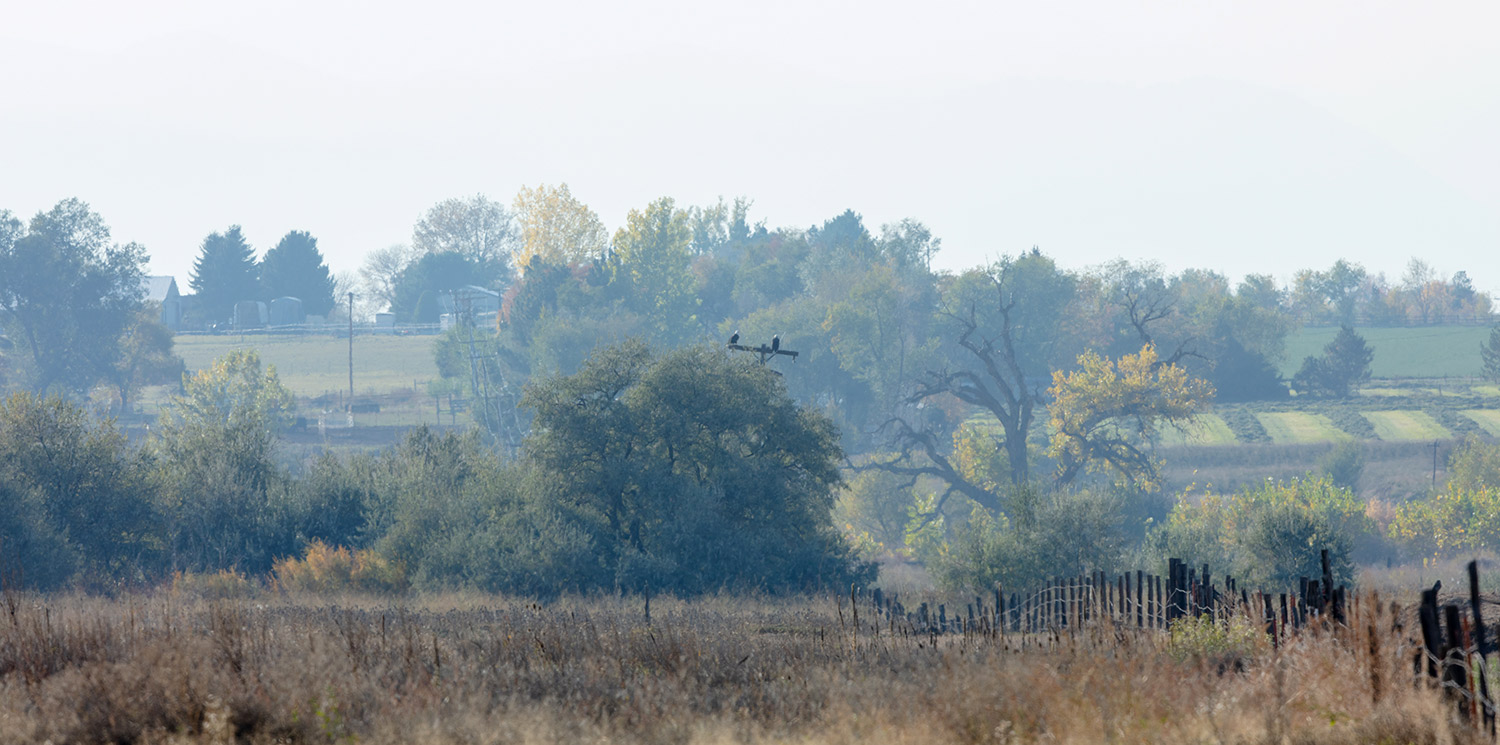
Photo 14: CR16 pair at perch K. Boulder Creek is in the background marked by the dead old-growth cottonwood. Starting in the fall of 2017, the CR16 pair regularly started to utilize a number of common perches in this area. Not until December of 2017, did we finally discover that the CR16 eagles had built a new nest nearby along Boulder Creek.
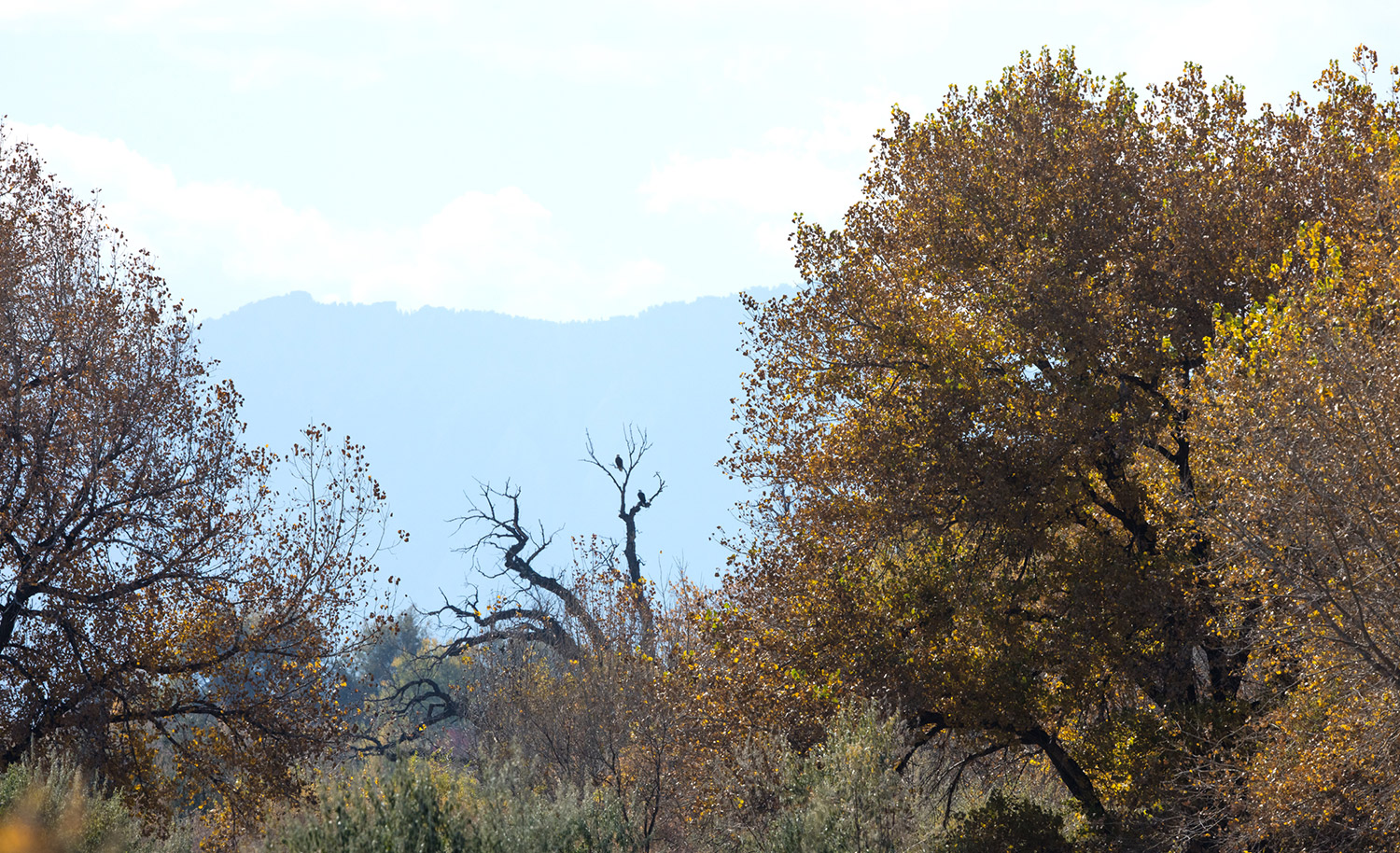
Photo 15: CR16 pair perched in a dead cottonwood tree along Boulder Creek in Fall 2017. Their new nest was located only 1/3 mile from this perch.

Photo 16: Another common perch for the CR16 pair in Fall 2017 (perch Q). The metal building is abandoned and belongs to the U.S. Department of Commerce. Fortunately, all these power lines are de-energized and no longer pose an electrocution risk.
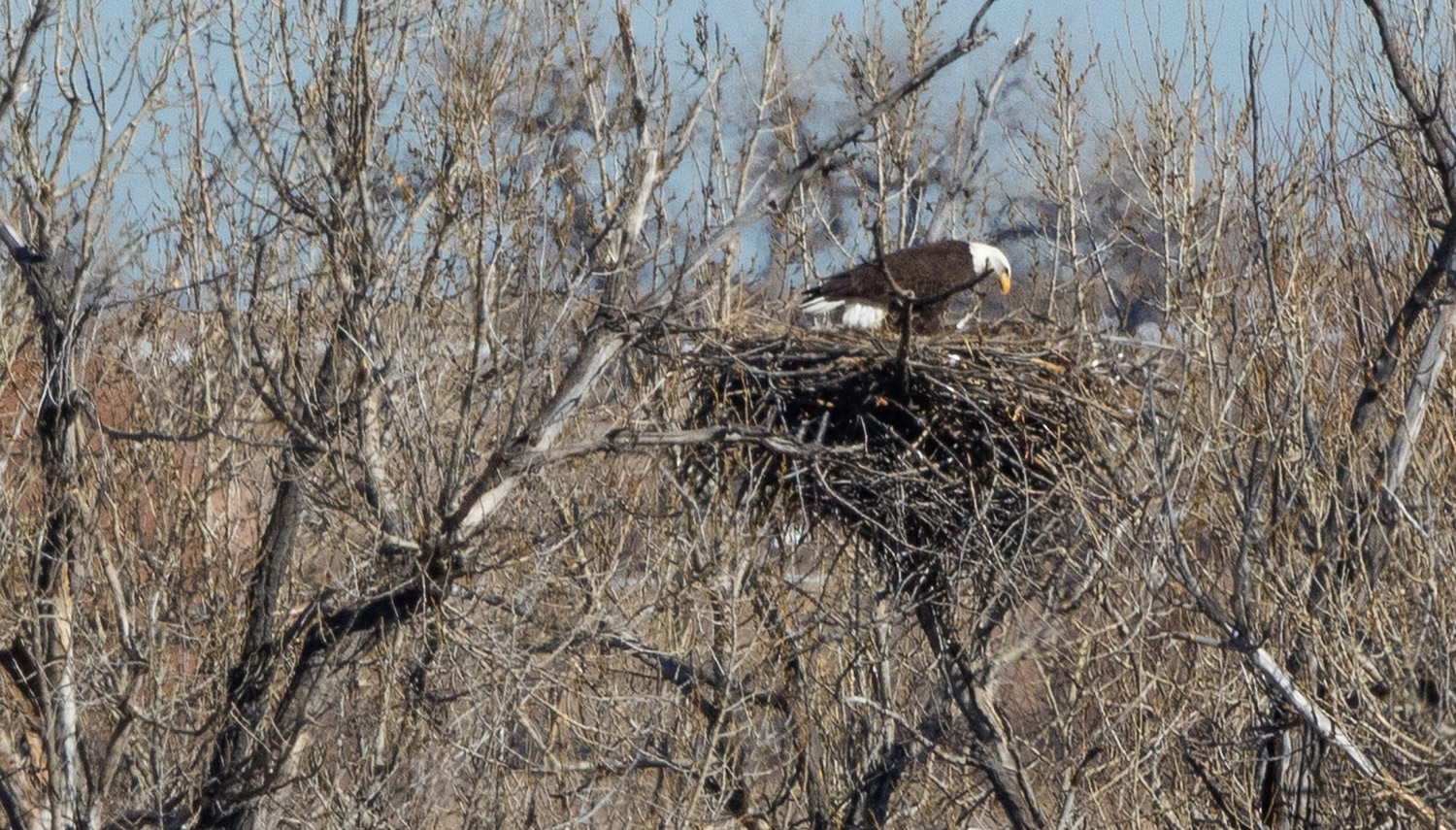
Photo 17: The new CR16 nest built upon a former heron nest, atop a relatively thin and spindly cottonwood tree. Photo taken in February 2018, about 1 week after onset of incubation.
The CR16 pair remained in their established nest territory following the loss of their nest through the following summer, and in the early fall began constructing a new nest, within a few hundred feet of their fallen nest tree (photo 18). Once again, the new nest was constructed upon a heron nest situated at the exposed pinnacle of the tree. Like the previous nest tree, the current nest is in a young cottonwood tree, and unlike its old-growth counterparts, sways wildly side to side in strong winds.
The short video clip was taken on May 21, 2020 during a late afternoon windstorm. The CR16 juvenile, still more than 3 weeks prior to flying, rides out the storm in the nest.
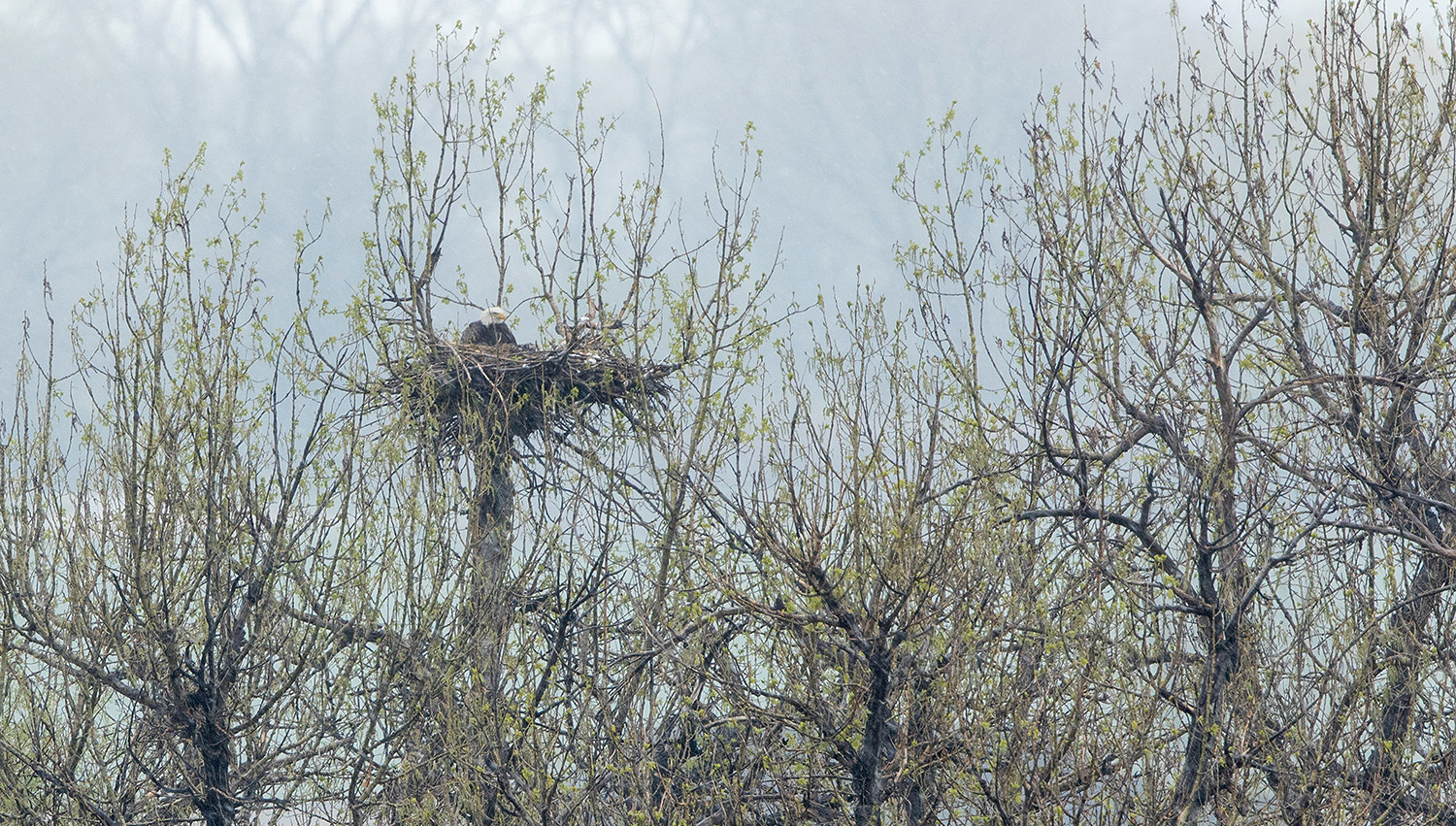
Photo 18: Currently occupied CR16 nest that was built in winter of 2018, only a few meters from the previous nest tree that fell. This nest was also built upon a former heron nest, and while the tree is more stout than its predecessor, it still sways wildly during strong winds.

